
Chaotic Resonance of the Echo Chamber
We're tweeting and sharing and posting. We touch on a politically sensitive subject. And we don't hesitate to engage in a friendly dialogue amongst community members. This is how folks learn. The back and forth sway. As we all know, a simple text exchange can quickly turn a meal of delicacies into a food fight.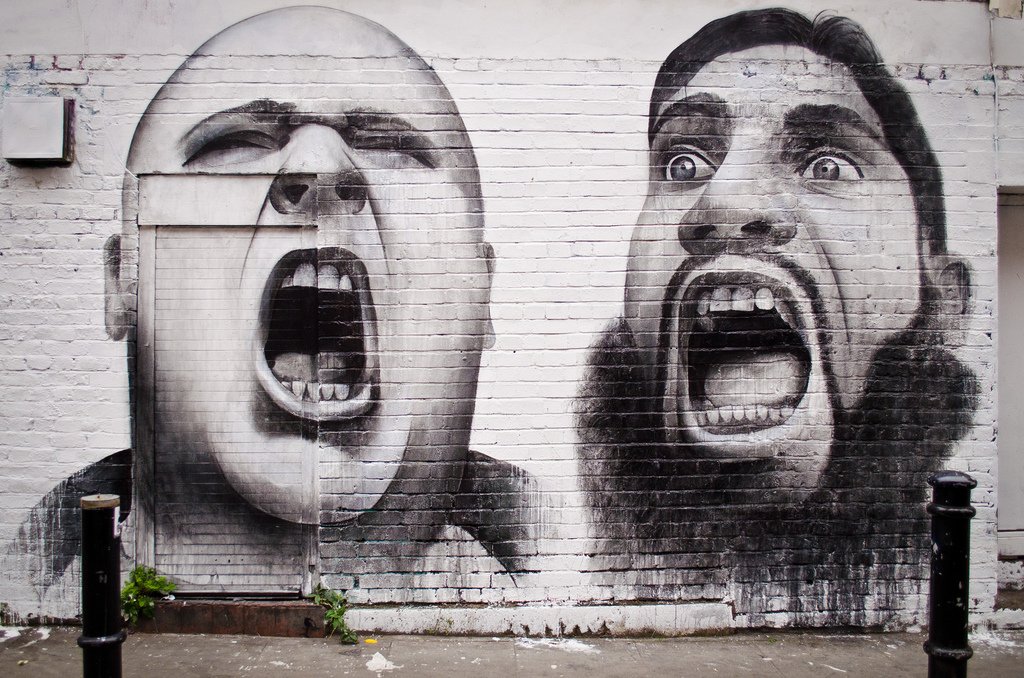 How do you handle these situations? People can get defensive and hurl insults and redirect the conversation to be something personal. Maybe the person was having a bad day and was ready to conflict with anyone, and you happened to be at the wrong place at the wrong time. Or maybe you unknowingly overstepped a boundary. Either way, an issue was created. Then we must determine: Is this salvageable? Or do we part ways?Social media allows us to develop online allies who echo our sentiment, but our allies might not share the same ideology so there can be conflict. Being an ally doesn't mean we're supposed to agree on every angle of an issue. We might agree on the issue, but the approach can be different. Allyship also doesn't mean people have license to verbally abuse someone. I don't get to attack you because you misunderstand a nuance within Native culture. And vise versa. You don't get to attack me for advocating for my tribal communities. It's a frail rope we walk, but one worth walking. And will pave a path for new methods in forming society. First, we must productively engage.Since social media disassociates physical proximity from verbalized ideology, how do you respond to issues of contention? Do you immediately block someone? Do you withhold your thoughts to save an argument? Do you ask someone to take a break from the exchange? Or do you repeatedly engage until either you or the other person grows tired enough to unfollow and block? How do you handle the chaotic resonance of the echo chamber?
How do you handle these situations? People can get defensive and hurl insults and redirect the conversation to be something personal. Maybe the person was having a bad day and was ready to conflict with anyone, and you happened to be at the wrong place at the wrong time. Or maybe you unknowingly overstepped a boundary. Either way, an issue was created. Then we must determine: Is this salvageable? Or do we part ways?Social media allows us to develop online allies who echo our sentiment, but our allies might not share the same ideology so there can be conflict. Being an ally doesn't mean we're supposed to agree on every angle of an issue. We might agree on the issue, but the approach can be different. Allyship also doesn't mean people have license to verbally abuse someone. I don't get to attack you because you misunderstand a nuance within Native culture. And vise versa. You don't get to attack me for advocating for my tribal communities. It's a frail rope we walk, but one worth walking. And will pave a path for new methods in forming society. First, we must productively engage.Since social media disassociates physical proximity from verbalized ideology, how do you respond to issues of contention? Do you immediately block someone? Do you withhold your thoughts to save an argument? Do you ask someone to take a break from the exchange? Or do you repeatedly engage until either you or the other person grows tired enough to unfollow and block? How do you handle the chaotic resonance of the echo chamber?
Support a Native owned Etsy shop, Allies United, where I offer unique merch for allies of social justice movements, like MMIW, Native Lives Matter and Black Lives Matter. Take a look inside my Etsy shop here: etsy.com/shop/AlliesUnited.
(Image above was borrowed from Flickr)
Colloquial Traits in Tribal Regionalism
Often I sit here in front of this computer and think about how to capture the voice of a narrator. Voice is the darkness around the thief, his soft footsteps, and his choice of victim. There is nothing innocent about what we writers do. We're persuasive colonizers seeking to intrude on your sensibilities. We're convincing--softly so. When I read passages from Faulkner's work and observe the way he captured southern diction, I can't help but be humbled. The small pauses and grand judgements alike--all are done with a slight of hand I wish to master.
When I read passages from Faulkner's work and observe the way he captured southern diction, I can't help but be humbled. The small pauses and grand judgements alike--all are done with a slight of hand I wish to master.
“In a strange room you must empty yourself for sleep. And before you are emptied for sleep, what are you. And when you are emptied for sleep, what are you. And when you are emptied for sleep you are not. And when you are filled with sleep, you never were. I don't know what I am. I don't know if I am or not.” ― William Faulkner, As I Lay Dying
I've taken the task to implement something similar with my two tribal communities. I've sought to capture the way Kiowa and Cherokee people speak as the chosen "voice" for my narration. Why? It's not just because I was raised in these two communities, but that is a major reason. When you grow up between two tribal cultures, especially two which are historically set in two different landscapes (southern plains versus mountain/hills), you can't help but recognize the beautiful differences.My writing has always attempted to disrupt the homogenous stereotype of Native people belonging to the same culture (and often a culture perceived to be plains). It's important to know there are unique differences between each tribal culture and we are brought together by a common and shared history of colonialism. The continued struggle against this colonial force has further fused our identities in a universal Pan-Indian construct. But the differences in our languages, dances, songs, customs, social etiquette hasn't vanished.In the case of my writing, we can also include colloquialism.Kiowa and Cherokee people share colonial boundaries by having been transplanted into what was formerly known as Indian Territory (the largest prisoner of war camp in recorded history), which is now Oklahoma. Kiowa people live on the southern plains while Cherokee people live in Ozarks. But both tribes are in Oklahoma. Not only are my tribes divided by geographical topography but also language, culture, and tribal history. Before the reservation era, Kiowa people were nomadic and situated in a warrior culture (a part of a tribal plains coalition which held off the U.S. government from westward expansion for over 100 years), and Cherokee people were agrarian mountain people (who spear-headed major legal battles with the U.S. government generations before plains Natives seen their first U.S. soldier).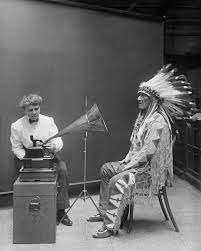 As a writer, my attempt is to show this distinction by way of vernacular. In the way you read Faulkner's representation of Southern culture in the above passage, I take the Oklahoman way in which Cherokee people speak that's indicative of small towns in the Ozarks of northeastern Oklahoma and northwestern Arkansas. To contrast, I take an Indigenized English through Kiowa language to capture how tribes on the southern plains speak.Below I give an example from two different short stories. Time Like Masks (published in South Dakota Review) captures the Okie twang that is characteristic of how Cherokee people speak in my community of Tahlequah. Our Dance (published in American Short Fiction) captures an Indigenized English which is not only indicative of how Kiowa people speak, but Comanche and Apache on the southern plains.Cherokee/Tahlequah:
As a writer, my attempt is to show this distinction by way of vernacular. In the way you read Faulkner's representation of Southern culture in the above passage, I take the Oklahoman way in which Cherokee people speak that's indicative of small towns in the Ozarks of northeastern Oklahoma and northwestern Arkansas. To contrast, I take an Indigenized English through Kiowa language to capture how tribes on the southern plains speak.Below I give an example from two different short stories. Time Like Masks (published in South Dakota Review) captures the Okie twang that is characteristic of how Cherokee people speak in my community of Tahlequah. Our Dance (published in American Short Fiction) captures an Indigenized English which is not only indicative of how Kiowa people speak, but Comanche and Apache on the southern plains.Cherokee/Tahlequah:
"Come to find out, he was the grandson to my aunt Josie, who was the sister to my mother, Leanna. According to Cherokee clan customs, Carl was a nephew, a nephew through a first cousin I hardly knew. Guess that was how relations grew as old got older—more years, more kin. My aunt Josie went and married a Kiowa and spent most of her days living in southern Oklahoma; I never visited so I hardly seen my cousins, much less their kids. Carl, on the other hand, made himself known to me in a peculiar way. Unlike others, I listened to him, and you might say, at least how I figured, he baffled everyone." --Oscar Hokeah in Time Like Masks
Kiowa/Lawton:
"Gaa, we were just little guys, around a year old, when Kiowas started getting that ahongiah back in ’76, no, maybe in ’77. It was the coalition of Kiowas, Comanches, and Apaches that leased a tract of land to Fort Sill military base for one hundred years. Good thing, too, because us Kiowas divided our share of the money between all tribal members, fifteen hundred a piece. Those of us under the age of eighteen had our money held in trust, growing interest until our day. We were the last in our families to walk through the front doors of those cookie-cutter homes to hear our mothers say, 'Your per cap check is on the table.'" --Oscar Hokeah in Our Dance
The trick isn't just to capture the nuances in the speech pattern, but to also transfer it to literature. When we tell a story face-to-face we're filled with excessive pauses and added words to fill time and space for us to think as we speak. When transforming a vernacular to the page, you must take out enough and leave in enough to capture the intended identity. This is not easy. It took me years to find the right balance.But all this goes toward showcasing the beautiful differences between Kiowa and Cherokee culture. There are a number of other things I do--some obvious and some subtle--to further capture the difference, but this post is about voice so I wanted to speak directly about vernacular in my tribal communities and in my writing. As we move to an appreciation of diversity in America, we can further appreciate the complexity of tribal cultures.The two above examples are a part of my novel-in-stories, Unsettled Between. I'm deep in a final revision right now and tightening up character and voice. The novel is narrated by twelve different family members and focuses on the transformation of one character, Carl Geimausaddle. Like so many of us, Carl wants the freedom to be his own person, to shape his own identity. He attempts to do so by leaving his family and rejecting his Kiowa and Cherokee communities. But will life struggles allow him his freedom? Unsettled Between examines how identity is at the mercy of community and the inseparable bond we have with the people who love us the most.Unsettled Between is Rep'd by Allie Levick of Writers House Literary Agency.
Support a Native owned Etsy shop, Allies United, where I offer unique merch for allies of social justice movements, like MMIW, Native Lives Matter and Black Lives Matter. Take a look inside my Etsy shop here: etsy.com/shop/AlliesUnited.
Real Life Turns Into Fiction
I've said this before: If you don't want to be villain in fiction then don't be one in real life. The beautiful thing about graduating from two different writing programs are the connections made between creative writers and journalists. We tend to be tasked with a similar challenge. How to captivate an audience.Twitter can be a great place for inspiration. I haven't posted on my blog in a while. I apologize. Since signing with my literary agent, I've been busy meeting deadlines and tightening up my novel-in-collection, Unsettled Between. A great opportunity has landed in my lap so I've thrown myself into the writing. I expect to achieve a great work of fiction and I'm excited for audiences to engage in the material.I was on Twitter last night and there was a small exchange. It was about personal histories laced into the writing of fiction. I draw from real life. It's been odd how very clear storylines play out in my personal life. Maybe it's my lens. I'm a writer. I see story everywhere I look. But when a clearly defined villain oppresses people in a certain environment, it's hard to ignore, and then the little minions enslaved by these oppressors add interesting subplots. Soon I have an entire novel's worth of fiction to write.I could go on my social media and blast people (we see that often), but I find it more beneficial to mold those personal experiences into a storyline and package it in a way that is entertaining, and available for audiences to reflect.You must realize something about artists: our only loyalty is to the well being of the community. We are guided by tribal justice. The main component for tribal justice? To put everything out in front of the public, make everyone aware of the problem, let the community's judgement become the justice. Similarly, this is the task of journalists as well. Zitkala Sa wrote a story, The Trial Path, where a young man had to face the judgement of his community, and every time I think of my obligation as a writer I think of this story.We have several platforms, but the one most powerful is the one that becomes a part of a continuing literature situated in a historical dialogue. Those who are interested in a legacy should be especially aware that intelligent people can discern the fleeting methods from the ones that stick around for a generation.
Zitkala Sa wrote a story, The Trial Path, where a young man had to face the judgement of his community, and every time I think of my obligation as a writer I think of this story.We have several platforms, but the one most powerful is the one that becomes a part of a continuing literature situated in a historical dialogue. Those who are interested in a legacy should be especially aware that intelligent people can discern the fleeting methods from the ones that stick around for a generation.
Support a Native owned Etsy shop, Allies United, where I offer unique merch for allies of social justice movements, like MMIW, Native Lives Matter and Black Lives Matter. Take a look inside my Etsy shop here: etsy.com/shop/AlliesUnited.
(The image was borrowed from wikimedia commons)
Twitter Serves Minority Writers: Intro to New Agent & #DVpit Success
Metaphorically #DVpit becomes water. Likewise, I could say Twitter is some type of container--a canteen maybe--something tethered to your belt. Whether you've been slinging a sledge hammer to break rocks or ripping callouses off your hands for grip on a climb, you're exhausted and you could use a drink. What you need is opportunity and energy to keep climbing, to keep breaking those rocks.I've said this a number of times on my blog. One of the biggest obstacles for minority writers is opportunity. There can be a number of reasons why you might not see much diversity at your writer's conference. Questions race through our minds. Where am I going to get the resources to attend? Who's going to take care of my kids? Will I lose my job? How will I pay my bills? And those are only a few of the questions. Economic disparity for minorities is not a new topic. It's easy to see how avenues for success can close down for a minority writer seeking to give voice to the voiceless, to represent her community in a genuine way.Little did I know #DVpit would be an environment for such opportunity. I read their website (www.dvpit.com) and I jumped onto their Twitter (@DVpit_). I understood the concept and was hopeful. The event was started by Beth Phelan and what grabbed me was the description:
"#DVpit is a Twitter event created to showcase pitches from marginalized voices that have been historically underrepresented in publishing. This includes (but is not limited to): Native peoples and people of color; people living and/or born/raised in underrepresented cultures and countries; disabled persons (including neurodiverse); people living with illness; people on marginalized ends of the socioeconomic, cultural and/or religious spectrum; people identifying within LGBTQIA+; and more." -- Beth Phelan.
After reading the description, I marked it on my calendar and started to prepare my pitch. I wasn't sure of what was to come of this "Diverse Voices Pitch" event, aka #DVpit, but I knew I had to try. What happened was this: I started to get "likes" or clicks which are hearts on Twitter. This is a good sign because a "like" means, "Hey, send me a query; I like what you're writing." So that's what I did. I had five agents click so I sent out five queries and I received five requests for manuscripts (two full and three partial). All five were from large literary agencies in New York and California. Oddly enough two of the agents were from the same agency so they worked out who would read the manuscript.Long story short, I signed with an agent. It took one week to filter through the process, and when I had to pull my submissions with the other agents they emailed back saying their congratulations. One of the agents read the full manuscript even though she wouldn't be representing the novel. She was very kind and generous with her compliments. I am completely humbled by it all.In this, I must give a big thank you to Beth Phelan for creating a space where minorities can navigate environments they might not otherwise be able. I highly recommend minority writers to seek out #DVpit for 2019. After looking into this event I also ran across other Twitter events which offer similar opportunities for writers, like #Pitmad, #PitchWars, #PitDark, and #PBPitch. I recommend writers to look into which pitching event fits your genre and participate. Take the time to develop your pitch, as well as your book (the market is still competitive and there is no guarantee).I've saved the best for last: I'm proud to announce I'm rep'd by Allie Levick of Writers House Literary Agency. I can't say enough about how excited I am. My palms have ripped through callouses getting to the next hold, and having Allie on my side makes me optimistic about the next climb. She is now representing my novel, UNSETTLED BETWEEN. You can find her via the Writers House website, www.writershouse.com, her personal website, www.alexandralevick.com, or her Twitter, @AllieLevick.
What happened was this: I started to get "likes" or clicks which are hearts on Twitter. This is a good sign because a "like" means, "Hey, send me a query; I like what you're writing." So that's what I did. I had five agents click so I sent out five queries and I received five requests for manuscripts (two full and three partial). All five were from large literary agencies in New York and California. Oddly enough two of the agents were from the same agency so they worked out who would read the manuscript.Long story short, I signed with an agent. It took one week to filter through the process, and when I had to pull my submissions with the other agents they emailed back saying their congratulations. One of the agents read the full manuscript even though she wouldn't be representing the novel. She was very kind and generous with her compliments. I am completely humbled by it all.In this, I must give a big thank you to Beth Phelan for creating a space where minorities can navigate environments they might not otherwise be able. I highly recommend minority writers to seek out #DVpit for 2019. After looking into this event I also ran across other Twitter events which offer similar opportunities for writers, like #Pitmad, #PitchWars, #PitDark, and #PBPitch. I recommend writers to look into which pitching event fits your genre and participate. Take the time to develop your pitch, as well as your book (the market is still competitive and there is no guarantee).I've saved the best for last: I'm proud to announce I'm rep'd by Allie Levick of Writers House Literary Agency. I can't say enough about how excited I am. My palms have ripped through callouses getting to the next hold, and having Allie on my side makes me optimistic about the next climb. She is now representing my novel, UNSETTLED BETWEEN. You can find her via the Writers House website, www.writershouse.com, her personal website, www.alexandralevick.com, or her Twitter, @AllieLevick.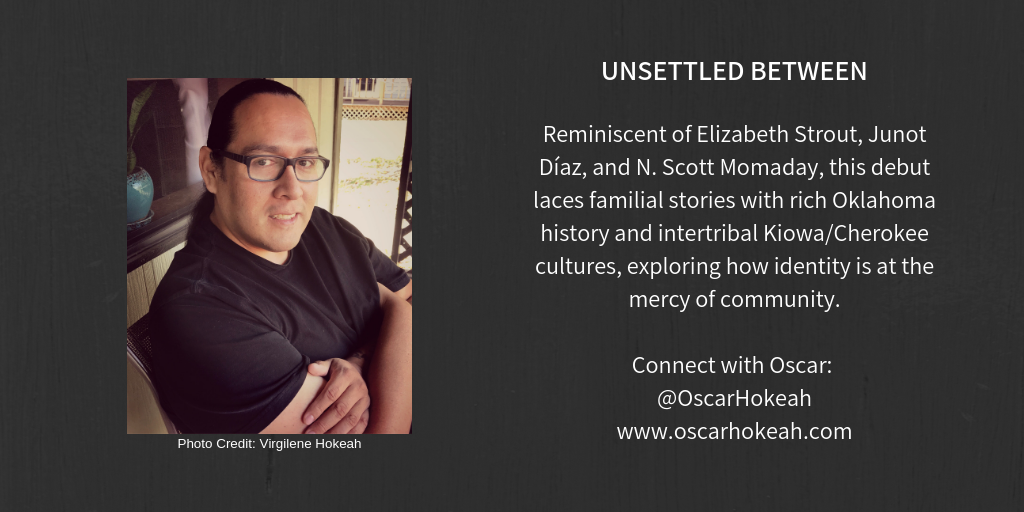
Twitter #DVpit & Announcements
Often we spend so much time looking down at our phones we forget to look up. I catch myself looking at the stars at night and the moving clouds in the day, realizing I'm watching them like I had when I was kid. Those were days before Reasor's Grocery Store in Tahlequah moved from Choctaw Street to Muskogee Avenue, and back when there was a drive-in theater outside my aunt's house on the southside of Lawton. Back then, we never looked down. I watch my kids and can see the pure optimism they carry in every moment, and I think that's what we admire about children. We say things like, "I wish I had just a little of their energy," and I wonder if what we really desire is to live every moment with sheer optimism. That's where they get their energy. Children have this way in the world which always holds onto the best in each moment.Today I have some great news to share. And it brings me some much needed optimism. First, I'm going to have to apologize for having went a few weeks without posting. I have great followers and each of you say profound things on my blog which blow me away. Often I find myself contemplating new avenues of thought after an exchange of ideas. For that I'm grateful, and for the same reason, I apologize for disappearing into the shadows.I'd like to say it was for good reason. I've been writing. More importantly, I've been preparing my novel, Unsettled Between, for review by agents. And that brings me to my news.Without saying too much, I participated in a Twitter pitch event called #DVpit and had some amazing results. I signed with a literary agent who will represent Unsettled Between.I can't believe my luck/fate/circumstances. We've decided to make a formal announcement this upcoming Thursday. I'll post her name and the agency she works for and her social media outlets in a couple of days. Look for the post here on my blog. We signed the agreement on Friday so we've had just a few days to move things along. I'll say this: She's already given me the editorial letter and hands down the adjustments will make the novel better.I'll save the rest for Thursday. I don't want to get too far ahead of myself. But what a great day to look up.
I watch my kids and can see the pure optimism they carry in every moment, and I think that's what we admire about children. We say things like, "I wish I had just a little of their energy," and I wonder if what we really desire is to live every moment with sheer optimism. That's where they get their energy. Children have this way in the world which always holds onto the best in each moment.Today I have some great news to share. And it brings me some much needed optimism. First, I'm going to have to apologize for having went a few weeks without posting. I have great followers and each of you say profound things on my blog which blow me away. Often I find myself contemplating new avenues of thought after an exchange of ideas. For that I'm grateful, and for the same reason, I apologize for disappearing into the shadows.I'd like to say it was for good reason. I've been writing. More importantly, I've been preparing my novel, Unsettled Between, for review by agents. And that brings me to my news.Without saying too much, I participated in a Twitter pitch event called #DVpit and had some amazing results. I signed with a literary agent who will represent Unsettled Between.I can't believe my luck/fate/circumstances. We've decided to make a formal announcement this upcoming Thursday. I'll post her name and the agency she works for and her social media outlets in a couple of days. Look for the post here on my blog. We signed the agreement on Friday so we've had just a few days to move things along. I'll say this: She's already given me the editorial letter and hands down the adjustments will make the novel better.I'll save the rest for Thursday. I don't want to get too far ahead of myself. But what a great day to look up.
Reductive Discernment Between the Crabs in the Barrel and Fake In'dins
You've done the work. Wrote the story, painted the painting, soldered the jewelry, sculpted the clay, or weaved the basket. You've put in the hours at the workstation, lost yourself in the art, creating work unique and powerful and meant to contribute to a collective of voices echoing from generations past. Then you take the work into the world. Now it's time to dance with the "crabs in the barrel" and the "fake In'dins." It's a miracle when an artist makes it. So much so we have to celebrate each time it occurs. Just to sit back and think of all the obstacles that individual had to navigate to be successful is worth the admiration.Those of you who have consistently followed my blog and contributed in length to discussions are in for a ride. I'm going to give you a little insight into the Native art world. And some of it will sound familiar to your own circumstances, and then some of it you're going to scratch your head and try to figure out how and why.I've been in these circles a long time. I graduated with a Bachelors of Fine Arts in Creative Writing from the only Native Arts college in existence. The Institute of American Indian Arts is a unique institution which focuses on contemporary Native arts and is located in Santa Fe, New Mexico. It's churned out some of the greatest Native artists in the world. I'm lucky and grateful to have developed myself among so many Native intellectuals and artisans.To a certain extent, we were sheltered from a predatory art world. Maybe we needed to be sheltered so as to properly develop ourselves. I can see many strengths to developing in an isolated group of artists, so as to hone our skills before hitting a market that's symptomatic of pitfalls.Once we step into the arena, we encounter first the "crabs in the barrel," who are bent on never seeing another Native do well. This is the Natives against Natives idiocy that plays out. Instead of celebrating the talent of our fellow Natives, we are intimidated so we attack. We tear down those Natives around us, and the more talented or motivated the harder the attack. We can go after heritage association, by "How much In'din are you?," or "What family do you belong to?" And if that doesn't work, then we'll go after participation, as in "Do you even speak your language?" or "Have you been to a stomp dance?" We desperately reach and grab into the darkness for any and all cultural knowledge to weaponize and utilize to attack a fellow Native artist.
It's a miracle when an artist makes it. So much so we have to celebrate each time it occurs. Just to sit back and think of all the obstacles that individual had to navigate to be successful is worth the admiration.Those of you who have consistently followed my blog and contributed in length to discussions are in for a ride. I'm going to give you a little insight into the Native art world. And some of it will sound familiar to your own circumstances, and then some of it you're going to scratch your head and try to figure out how and why.I've been in these circles a long time. I graduated with a Bachelors of Fine Arts in Creative Writing from the only Native Arts college in existence. The Institute of American Indian Arts is a unique institution which focuses on contemporary Native arts and is located in Santa Fe, New Mexico. It's churned out some of the greatest Native artists in the world. I'm lucky and grateful to have developed myself among so many Native intellectuals and artisans.To a certain extent, we were sheltered from a predatory art world. Maybe we needed to be sheltered so as to properly develop ourselves. I can see many strengths to developing in an isolated group of artists, so as to hone our skills before hitting a market that's symptomatic of pitfalls.Once we step into the arena, we encounter first the "crabs in the barrel," who are bent on never seeing another Native do well. This is the Natives against Natives idiocy that plays out. Instead of celebrating the talent of our fellow Natives, we are intimidated so we attack. We tear down those Natives around us, and the more talented or motivated the harder the attack. We can go after heritage association, by "How much In'din are you?," or "What family do you belong to?" And if that doesn't work, then we'll go after participation, as in "Do you even speak your language?" or "Have you been to a stomp dance?" We desperately reach and grab into the darkness for any and all cultural knowledge to weaponize and utilize to attack a fellow Native artist.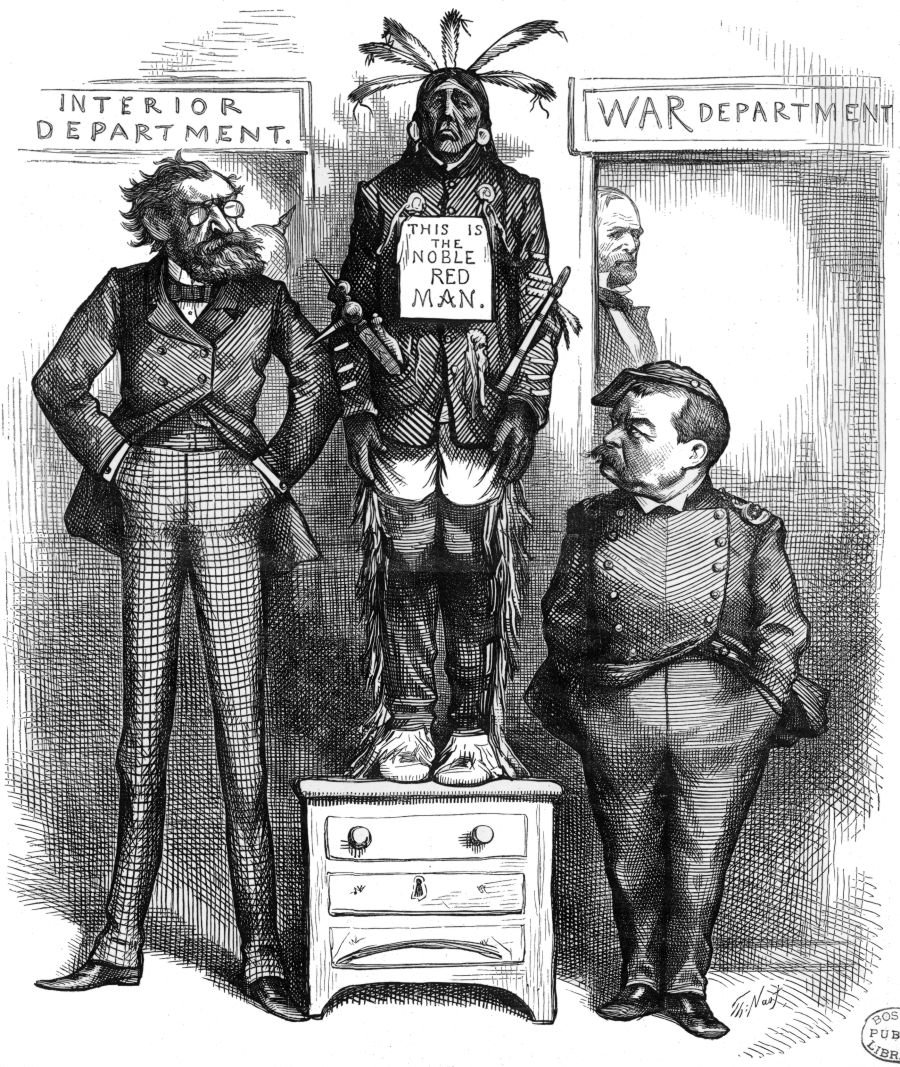 Then we have the "fake In'dins," who slither into our circles with false promises and outright lies. When I was at IAIA the first among this group I crossed was the infamous Joseph Boyden, who we all thought was Ojibwa, and nobody either knew otherwise or didn't tell us students otherwise. He certainly didn't tell us students otherwise. So where was his ethos? I assumed, "Hey, he's at a famous Native arts college and he's writing about Ojibwas, so he must be Ojibwa." IAIA wouldn't bring in a fake In'din? He was visiting the school and spent about a week on and off campus promoting his book. Then we find out he's not Native at all and he's won the Canadian equivalent of the Pulitzer Prize. More or less, he's taken an award out of a Canadian Native writer's hands.But what makes the situation hard for new and upcoming Native artists are the "fake In'dins" swimming in the shallows near the shore. When we first step into the real world arena, we often meet people, artists, who we can bond with because they are in the same boat--navigating the Native art scene. We believe they are Native because they say they are Native, and then at some point (often years down the line) we find out they are not Native at all. They have Native blood in their lineage but cannot prove it. Which in and of itself is fine, but if you are trying to capitalize off of it and put out what is to be considered "Native Art" then you are stealing from community born and raised Natives--stealing space, stealing awards, stealing time, stealing success. But we've seen this stealing before. It has been a consistent part of Native American history. It's adapted and changed faces, but it's all the same, and unfortunately we Natives must roll our eyes and say to ourselves, "Here we go again."Getting hit on both sides of the drum, a Native artist starts to see the "crabs in the barrel" and the "fake In'dins" as serving the same God. Ultimately they both keep down Native people. In a world that's already designed to suppress Native voices it makes it doubly difficult when the deception is woven with falsity and nicety. When fake In'dins try to butter you up with false promises--similar to what our ancestors encountered in the past--and crabs in the barrel who jump on our back to try and destroy any chance we have for success (while in the process attempting to gain success for themselves).Now tell me there's a difference.
Then we have the "fake In'dins," who slither into our circles with false promises and outright lies. When I was at IAIA the first among this group I crossed was the infamous Joseph Boyden, who we all thought was Ojibwa, and nobody either knew otherwise or didn't tell us students otherwise. He certainly didn't tell us students otherwise. So where was his ethos? I assumed, "Hey, he's at a famous Native arts college and he's writing about Ojibwas, so he must be Ojibwa." IAIA wouldn't bring in a fake In'din? He was visiting the school and spent about a week on and off campus promoting his book. Then we find out he's not Native at all and he's won the Canadian equivalent of the Pulitzer Prize. More or less, he's taken an award out of a Canadian Native writer's hands.But what makes the situation hard for new and upcoming Native artists are the "fake In'dins" swimming in the shallows near the shore. When we first step into the real world arena, we often meet people, artists, who we can bond with because they are in the same boat--navigating the Native art scene. We believe they are Native because they say they are Native, and then at some point (often years down the line) we find out they are not Native at all. They have Native blood in their lineage but cannot prove it. Which in and of itself is fine, but if you are trying to capitalize off of it and put out what is to be considered "Native Art" then you are stealing from community born and raised Natives--stealing space, stealing awards, stealing time, stealing success. But we've seen this stealing before. It has been a consistent part of Native American history. It's adapted and changed faces, but it's all the same, and unfortunately we Natives must roll our eyes and say to ourselves, "Here we go again."Getting hit on both sides of the drum, a Native artist starts to see the "crabs in the barrel" and the "fake In'dins" as serving the same God. Ultimately they both keep down Native people. In a world that's already designed to suppress Native voices it makes it doubly difficult when the deception is woven with falsity and nicety. When fake In'dins try to butter you up with false promises--similar to what our ancestors encountered in the past--and crabs in the barrel who jump on our back to try and destroy any chance we have for success (while in the process attempting to gain success for themselves).Now tell me there's a difference.
(Images used in this post were borrowed from Wikimedia Commons)
The Art of Reaction & Trusting Our Protectors
One of the beautiful behaviors of people is our need to protect. We don't like bullies. This becomes more the case the older we get. There is something about seeing someone being treated terrible that we can't stand. Maybe it's a new comer who is unjustly getting targeted, or it could be someone vulnerable who doesn't have the means to stand up for themselves. Either way, when you see opportunists attacking someone, you can be assured the protectors will come out if full force.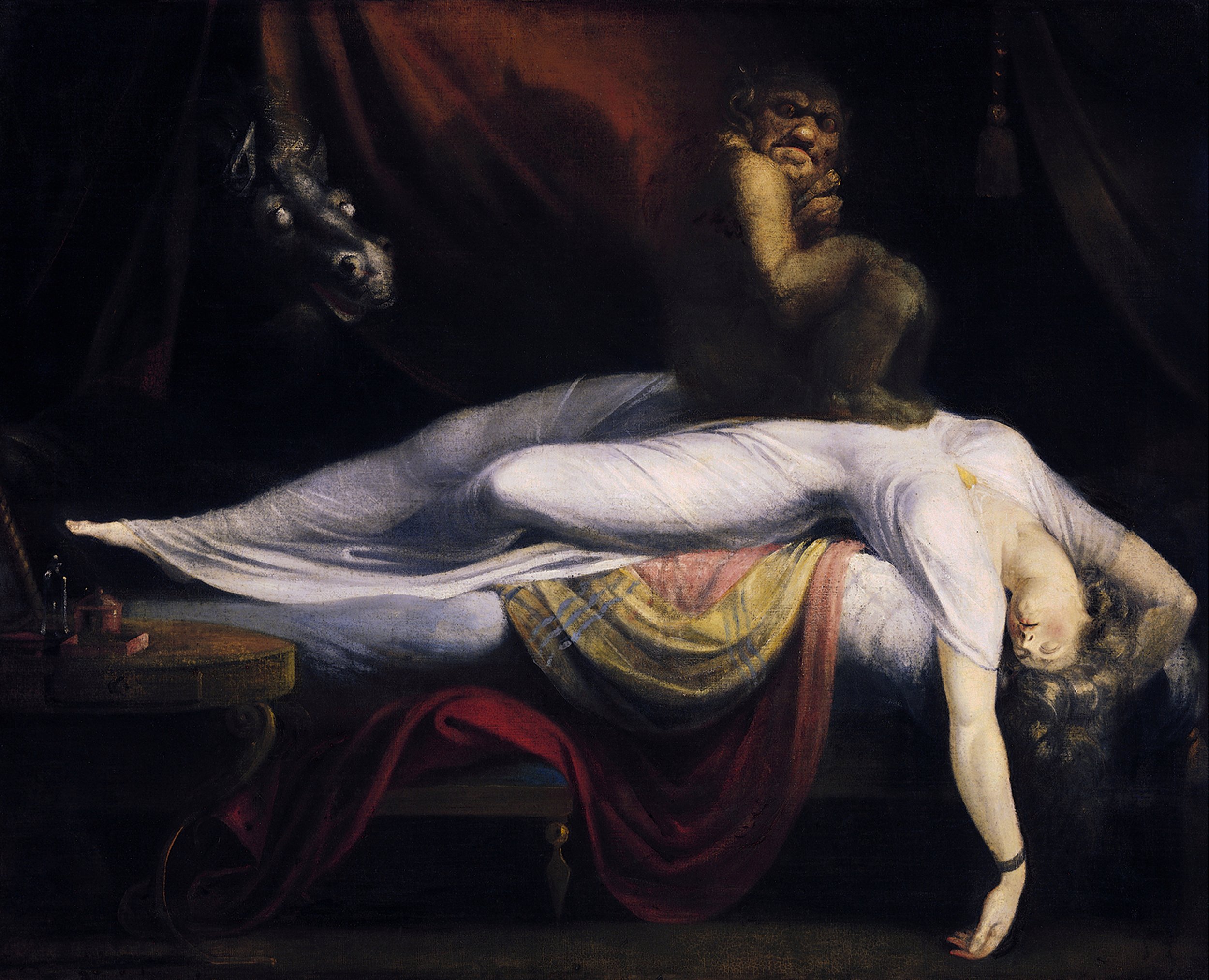 Those of us in the arts industry know all too well the backlash an artist can receive because of their popularity. Here you are doing your best work and putting all your energy into the art you are creating, and when it's time to showcase to the world what you've created, the bottom-feeders come out of the woodwork. They're like sharks sneaking up on you from small and unsuspecting places.Having been in and then out and then back in these environments I've learned a few things, and I'm going to give you a little insight on how to understand and work with the negative energy.
Those of us in the arts industry know all too well the backlash an artist can receive because of their popularity. Here you are doing your best work and putting all your energy into the art you are creating, and when it's time to showcase to the world what you've created, the bottom-feeders come out of the woodwork. They're like sharks sneaking up on you from small and unsuspecting places.Having been in and then out and then back in these environments I've learned a few things, and I'm going to give you a little insight on how to understand and work with the negative energy.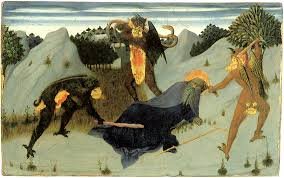 The first thing to understand is people are not going to stop. We can dream all day of the "what if" and how things "should be." There are people who gain energy from being positive and creating beautiful things, including beautiful relationships, and there are people who are energy vampires and they will attempt to use their negativity to tear you down. In fact, I'm sure there are bottom-feeders reading this post right now who can't wait to attack me for writing it.Here's the trick. Trust people to be who they are. If they're known for attacking people to build themselves up then they're always going to do so. Now, since you've picked out the bottom-feeders and you know how they are going to react, you can create your own reactions--not in a defensive tone but in a tone and advocacy for the positive things your doing. Just remind them and anyone listening of the good things your work is focused on. What will happen? One, they're not getting the negative response to feed themselves, and, two, you're giving people in your circles the opportunity to see the injustice. It'll show the clear avenue of negativity coming from the bottom-feeder.Next you'll start to see other people come to your defense. The protectors will step up and say, "She's doing good things for her people," in effect, and "She's trying to help," more or less. They're going to stand up for you. Why? Because you've helped them see the positive things you are doing. We have to remember: these bottom-feeders want people to only see the negativity. Everything they do will always come back to something ugly. They're incapable of doing it any other way. In response, we must be prepared to "show" and "describe" the positive aspects of our art. When the protectors can see, meaning visualize, how you are making your community better, then they are more willing to champion your cause.To a certain degree, exercising some savvy, you can set up these bottom-feeders for failure. Just keep putting yourself out there. At some point, they will attack you. Remember how I said, "Trust people to be who they are." Then when they do so. Take your opportunity to call the community to action. Remind them of the good you're doing and how you're bettering the community. It'll leave the bottom-feeders getting attacked for being so negative, and in the process you gain the solidarity the bottom-feeders are trying to disrupt.
The first thing to understand is people are not going to stop. We can dream all day of the "what if" and how things "should be." There are people who gain energy from being positive and creating beautiful things, including beautiful relationships, and there are people who are energy vampires and they will attempt to use their negativity to tear you down. In fact, I'm sure there are bottom-feeders reading this post right now who can't wait to attack me for writing it.Here's the trick. Trust people to be who they are. If they're known for attacking people to build themselves up then they're always going to do so. Now, since you've picked out the bottom-feeders and you know how they are going to react, you can create your own reactions--not in a defensive tone but in a tone and advocacy for the positive things your doing. Just remind them and anyone listening of the good things your work is focused on. What will happen? One, they're not getting the negative response to feed themselves, and, two, you're giving people in your circles the opportunity to see the injustice. It'll show the clear avenue of negativity coming from the bottom-feeder.Next you'll start to see other people come to your defense. The protectors will step up and say, "She's doing good things for her people," in effect, and "She's trying to help," more or less. They're going to stand up for you. Why? Because you've helped them see the positive things you are doing. We have to remember: these bottom-feeders want people to only see the negativity. Everything they do will always come back to something ugly. They're incapable of doing it any other way. In response, we must be prepared to "show" and "describe" the positive aspects of our art. When the protectors can see, meaning visualize, how you are making your community better, then they are more willing to champion your cause.To a certain degree, exercising some savvy, you can set up these bottom-feeders for failure. Just keep putting yourself out there. At some point, they will attack you. Remember how I said, "Trust people to be who they are." Then when they do so. Take your opportunity to call the community to action. Remind them of the good you're doing and how you're bettering the community. It'll leave the bottom-feeders getting attacked for being so negative, and in the process you gain the solidarity the bottom-feeders are trying to disrupt.
Support a Native owned Etsy shop, Allies United, where I offer unique merch for allies of social justice movements, like MMIW, Native Lives Matter and Black Lives Matter. Take a look inside my Etsy shop here: etsy.com/shop/AlliesUnited.
(The images used in this post were borrowed from Wikimedia and Wikipedia)
Lies, Love, & Magic: How Voice was Hijacked by Editor Mysticism & Workshop Critique BS!
The sought after and mysterious "voice" of writing. You watch editors salivate like Derridean defeatists about how magical voice can be when it "makes your foot tap to the rhythm." Aww, how romantic. We are lovely romantic beings who need magic in our lives. Well, I'm about to take the magic out of the what, where, and how to find a literary voice. For writers, we don't give a shit about magic. Our job is to deconstruct the process and lay it all out for other writers. We are here to help each other learn the tricks to make the magic happen for readers, which is why editors love to talk about the mysterious quality of writing. Because ultimately they are fans of literature. They are readers. We reader/writers--the ones who create the magic--must abandon all notions of romanticism. We're here to work. Why? Because we love the secrets of writing as much as we love the process. Because we love to make the magic and watch the readers read in awe.So if you've hit the google machine with a "how to find your voice" or "what is voice in literature" or "what is a writer's voice" then you've come to the right spot. I'm about to break this bad boy down.First and foremost I need to tell you what voice is not. So when we go to write we need the reader to see what we see as writers. The reader needs to be able to visualize the scenes as they play out in the course of our short story or novel. That is the action. That is description. The nuts and bolts.
For writers, we don't give a shit about magic. Our job is to deconstruct the process and lay it all out for other writers. We are here to help each other learn the tricks to make the magic happen for readers, which is why editors love to talk about the mysterious quality of writing. Because ultimately they are fans of literature. They are readers. We reader/writers--the ones who create the magic--must abandon all notions of romanticism. We're here to work. Why? Because we love the secrets of writing as much as we love the process. Because we love to make the magic and watch the readers read in awe.So if you've hit the google machine with a "how to find your voice" or "what is voice in literature" or "what is a writer's voice" then you've come to the right spot. I'm about to break this bad boy down.First and foremost I need to tell you what voice is not. So when we go to write we need the reader to see what we see as writers. The reader needs to be able to visualize the scenes as they play out in the course of our short story or novel. That is the action. That is description. The nuts and bolts.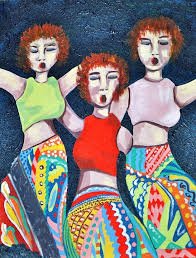 For example, if I write, "Dean took a step forward and gazed at the interesting ropes above." That is me describing action. This is the story. I'm going to say that again and put it in bold letters for emphasize. Okay, here goes: Action is the story. This is not the voice. The story is the most important part of writing. Not voice. I'll dispel voice in this post and then you can get to the real work: writing the story. It is the first and last thing you need to be thinking about when writing your short story or novel. You need to be focused on scene selection. Select your scenes in the sequence in which lays out the action to conclude on the climax. Scenes are the walls and floors of the house. Action and description are the nails and mortar holding the walls and floors together.Now it's time to decorate the house. Now "voice." Ready to dilute your desperate need for magic. Ready to grow up as a writer. Here goes. Voice is simply the insight, wisdom, and judgements of the narrator.So now I can hear people yelling at the computer screen. You need to take a breath. Life is not that hard. Take a minute and let me elaborate. I'll prove myself right. Oh, no wait, I'll allow you your "voice" and let you be the judge of that.
For example, if I write, "Dean took a step forward and gazed at the interesting ropes above." That is me describing action. This is the story. I'm going to say that again and put it in bold letters for emphasize. Okay, here goes: Action is the story. This is not the voice. The story is the most important part of writing. Not voice. I'll dispel voice in this post and then you can get to the real work: writing the story. It is the first and last thing you need to be thinking about when writing your short story or novel. You need to be focused on scene selection. Select your scenes in the sequence in which lays out the action to conclude on the climax. Scenes are the walls and floors of the house. Action and description are the nails and mortar holding the walls and floors together.Now it's time to decorate the house. Now "voice." Ready to dilute your desperate need for magic. Ready to grow up as a writer. Here goes. Voice is simply the insight, wisdom, and judgements of the narrator.So now I can hear people yelling at the computer screen. You need to take a breath. Life is not that hard. Take a minute and let me elaborate. I'll prove myself right. Oh, no wait, I'll allow you your "voice" and let you be the judge of that. So let's take the previously used example and rearrange it. Go back up and read if necessary. It was straight forward description. Now if I insert voice it might sound like, "Dean impulsively stepped forward (might know)--did his best to understand the intersecting ropes above." So with the quick insertion of an adjective "impulsively" and a quick but subtle judgement "did his best" I've cast judgement on Dean's actions. And the addition of (might know) is a Kiowa cultural judgment, so the "voice" is Kiowa and it is being judgemental of Dean's action.You can follow up the sentence with a bit of judgemental wisdom and add, "Still a monsape tali for his age (mid twenties) and you know how they say tali brains don't develop as fast a mautaun." So I've inserted a lot of Kiowa language into that one sentence but you can quickly assess by context the "voice" is making a judgement on the main character. By deduction and pop culture, you participate in the reading and deduce tali means boy and mautaun means girl. Why? Because it's commonly understood male brains develop slower than female brains.All I did was use judgement, insight, and wisdom. That's it. Nothing else. I did a little sentence play, and did my hyperlocal thing (indicative of my writing style). But I argue this: those pauses don't come until first you cast judgement, insight, and wisdom. I believe this to my core. So much so, I challenge you to take a straight forward sentence in your own story, add judgement (good or bad, love or hate doesn't matter), and all of a sudden you'll start putting in pauses and/or running sentences long. It is the judgement, insight, and wisdom that shapes the sentence. Hear me say that again: It is the judgement, insight, and wisdom that shapes the sentence.The Kiowa and hyperlocal tone all comes from judgement, insight, and wisdom. All our families and communities have it regardless of culture. In fact, as my mind starts to process the three aspects I mentioned, the tone of the community comes out. It is taking our mind space and inserting the value judgements which are already imbedded in us and using it as a tool to rearrange sentences. That's how you get those amazing sentences the great writers write, and that's how they developed their "voice."My favorite writers are N. Scott Momaday, Louise Erdrich, Gabriel Garcia Marquez, Alice Munro, and Junot Diaz. Take your pick. Go read their work, and then come back to me and tell me I'm wrong. In fact, I dare anyone to try to argue differently.
So let's take the previously used example and rearrange it. Go back up and read if necessary. It was straight forward description. Now if I insert voice it might sound like, "Dean impulsively stepped forward (might know)--did his best to understand the intersecting ropes above." So with the quick insertion of an adjective "impulsively" and a quick but subtle judgement "did his best" I've cast judgement on Dean's actions. And the addition of (might know) is a Kiowa cultural judgment, so the "voice" is Kiowa and it is being judgemental of Dean's action.You can follow up the sentence with a bit of judgemental wisdom and add, "Still a monsape tali for his age (mid twenties) and you know how they say tali brains don't develop as fast a mautaun." So I've inserted a lot of Kiowa language into that one sentence but you can quickly assess by context the "voice" is making a judgement on the main character. By deduction and pop culture, you participate in the reading and deduce tali means boy and mautaun means girl. Why? Because it's commonly understood male brains develop slower than female brains.All I did was use judgement, insight, and wisdom. That's it. Nothing else. I did a little sentence play, and did my hyperlocal thing (indicative of my writing style). But I argue this: those pauses don't come until first you cast judgement, insight, and wisdom. I believe this to my core. So much so, I challenge you to take a straight forward sentence in your own story, add judgement (good or bad, love or hate doesn't matter), and all of a sudden you'll start putting in pauses and/or running sentences long. It is the judgement, insight, and wisdom that shapes the sentence. Hear me say that again: It is the judgement, insight, and wisdom that shapes the sentence.The Kiowa and hyperlocal tone all comes from judgement, insight, and wisdom. All our families and communities have it regardless of culture. In fact, as my mind starts to process the three aspects I mentioned, the tone of the community comes out. It is taking our mind space and inserting the value judgements which are already imbedded in us and using it as a tool to rearrange sentences. That's how you get those amazing sentences the great writers write, and that's how they developed their "voice."My favorite writers are N. Scott Momaday, Louise Erdrich, Gabriel Garcia Marquez, Alice Munro, and Junot Diaz. Take your pick. Go read their work, and then come back to me and tell me I'm wrong. In fact, I dare anyone to try to argue differently.
Support a Native owned Etsy shop, Allies United, where I offer unique merch for allies of social justice movements, like MMIW, Native Lives Matter and Black Lives Matter. Take a look inside my Etsy shop here: etsy.com/shop/AlliesUnited.
(Images used in this post are not the property of the author. They were borrowed from Wikipedia, PxHere, and Pixabay)
Native American Cuisine in Kiowa Literary Thematics
Exploring culture through foods is nothing new to the literary world. Likewise, it's not new to Native American literature. While we in the literary field know this to be true there is still very little exploration of the topic in thematic terms. How can traditional food and customs associated with consumption of those foods enhance the greater theme of a piece?Those of you reading this post to learn how to make Native American food may be asking, "What is Native American cuisine?" You'll have to search a little further to find out details on cooking Native American food, but I'll give you a little sample of what may constitute Native American cuisine in this article. For further elaboration on the topic of Native American cuisine check out: Foods of the Southwest Indian Nations by Lois Ellen Frank. She taught my ethnobotany course at the Institute of American Indian Arts and knows what she's talking about. Plus she's Kiowa so that puts her on my radar. There are a host of other options you can find on Amazon as well. Diabetes is a serious issue among Native peoples so I'm going to link a vital source for healthy eating here: Click Here!Back when I was a young guy "tearing it" on the Southern Plains of Oklahoma meatpies were indicative of KCA culture (Kiowa, Comanche, and Apache). It was a localized food specific to a certain geographic area. Today, using meatpies as a Kiowa artist, it can be applied for generational specificity in that it "was" localized, and now tribes across Oklahoma and other parts of Native America have latched onto it as a "cultural food." Living in Tahlequah today I've found many Cherokees making meatpies, but when I was growing up in Tahlequah as a child meatpies weren't in the community so I would dream of trips back to Lawton, Oklahoma (KCA country) where I could get my hands on a meatpie. Oh, the diaspora!![]() In my short story, Our Dance, you'll find in the second paragraph of the story the narrator describe receiving his Kiowa per cap, his ahongiah, (which was federally dispersed money where the Kiowa tribe allocated a financial disbursement between all tribal members), as "we both tore into those envelopes faster than the last meatpie on a plate." In the juxtaposition of receiving money alongside a cultural food like meatpies, we deduce the equal desperation in which both were acquired, and how each--meatpie and money--have become an appropriated substance for cultural survival.Meatpies are made from the combination of fry bread and meat. More or less a meat-stuffed piece of fry bread. Fry bread is commonly understood as a cultural food, but it's not traditional, meaning our ancestors didn't make fry bread prior to contact by Western peoples. It became a consistent part of our cultural foods when the U.S. government distributed food rations to tribes (we commonly refer to them as commodities or "commods" for slang). Because meatpies are basically fry bread with meat inside, they have also become a survival food for Kiowa, Comanche, and Apache people in southern Oklahoma (further out now due to diasporic conditions).When the narrator of my story, Our Dance, describes going for money the same as going for "the last meatpie on the plate," it speaks to the creative and critical thinking skills applied by Kiowa people to take something and appropriate it for cultural survival. In essence the story's title, Our Dance, is the dance of survival, like meatpies, like receiving per cap, like bonding with the community. To further connect this thematic for the reader, the quote at the onset of the story by James Auchiah, “Kiowa Five” artist (now Kiowa Six) and Chief Satanta’s grandson, reads, “We Kiowa are old, but we dance.” It is the dance of survival beginning with the narrator's ancestors and carrying into his present community which dictates his use of cultural foods for survival, and subsequently my use of culture, food, and customs to connect the thematic dots for my readers.
In my short story, Our Dance, you'll find in the second paragraph of the story the narrator describe receiving his Kiowa per cap, his ahongiah, (which was federally dispersed money where the Kiowa tribe allocated a financial disbursement between all tribal members), as "we both tore into those envelopes faster than the last meatpie on a plate." In the juxtaposition of receiving money alongside a cultural food like meatpies, we deduce the equal desperation in which both were acquired, and how each--meatpie and money--have become an appropriated substance for cultural survival.Meatpies are made from the combination of fry bread and meat. More or less a meat-stuffed piece of fry bread. Fry bread is commonly understood as a cultural food, but it's not traditional, meaning our ancestors didn't make fry bread prior to contact by Western peoples. It became a consistent part of our cultural foods when the U.S. government distributed food rations to tribes (we commonly refer to them as commodities or "commods" for slang). Because meatpies are basically fry bread with meat inside, they have also become a survival food for Kiowa, Comanche, and Apache people in southern Oklahoma (further out now due to diasporic conditions).When the narrator of my story, Our Dance, describes going for money the same as going for "the last meatpie on the plate," it speaks to the creative and critical thinking skills applied by Kiowa people to take something and appropriate it for cultural survival. In essence the story's title, Our Dance, is the dance of survival, like meatpies, like receiving per cap, like bonding with the community. To further connect this thematic for the reader, the quote at the onset of the story by James Auchiah, “Kiowa Five” artist (now Kiowa Six) and Chief Satanta’s grandson, reads, “We Kiowa are old, but we dance.” It is the dance of survival beginning with the narrator's ancestors and carrying into his present community which dictates his use of cultural foods for survival, and subsequently my use of culture, food, and customs to connect the thematic dots for my readers.
Hyperlocal Advocacy in Native American Literature
I've been promoting my writing on my Twitter account for a few months now. Slowly but surely I'm getting more and more engagement and I'm nearing the cusp of 9K followers, and hoping to hit the 10K plus realm within a week or so. One of my followers, and now a tried a true fan, read through each of my short stories and came up with an interesting descriptor of my writing: hyperlocal. As soon as I read the phrase it hit me as so succinct I could not help but become fascinated. This term may have been utilized in creative circles for some time. I'm not sure. But its my first time engaging with it. Largely, I'm interested in the description because of how accurately it describes my writing.In my bio you'll read how I've captured my writing up to this point, and I've said things like "regionally specific" and focusing on Kiowa and Cherokee communities like Lawton (Kiowa) and Tahlequah (Cherokee). Now those from Oklahoma will quickly point out how Lawton is Comanche Nation central, and they'd be hypothetically correct. But geographically I argue these boundaries are not fixed and never have been.I'd say Kiowa, Comanche, and Apache (KCA) nomadic range in contemporary society is typically between OKC and Lawton, but you'll find our scouting parties traveling further out (all this is a cultural rehearsal in a historical context based in nomadic practices that have been a part of our cultures for hundreds if not thousands of years). You'd actually have to have grown up inside a Kiowa, Comanche, and/or Apache family to fully understand this nuanced "roaming" aspect of our culture. Once you understand, you can see how our gourd dance culture is so deeply imbedded in other tribal practices across the United States. An example? Our, Kiowa and Comanche, gourd dances have widespread practice within Navajo communities of New Mexico and Arizona, but other tribes in the United States as well.
As soon as I read the phrase it hit me as so succinct I could not help but become fascinated. This term may have been utilized in creative circles for some time. I'm not sure. But its my first time engaging with it. Largely, I'm interested in the description because of how accurately it describes my writing.In my bio you'll read how I've captured my writing up to this point, and I've said things like "regionally specific" and focusing on Kiowa and Cherokee communities like Lawton (Kiowa) and Tahlequah (Cherokee). Now those from Oklahoma will quickly point out how Lawton is Comanche Nation central, and they'd be hypothetically correct. But geographically I argue these boundaries are not fixed and never have been.I'd say Kiowa, Comanche, and Apache (KCA) nomadic range in contemporary society is typically between OKC and Lawton, but you'll find our scouting parties traveling further out (all this is a cultural rehearsal in a historical context based in nomadic practices that have been a part of our cultures for hundreds if not thousands of years). You'd actually have to have grown up inside a Kiowa, Comanche, and/or Apache family to fully understand this nuanced "roaming" aspect of our culture. Once you understand, you can see how our gourd dance culture is so deeply imbedded in other tribal practices across the United States. An example? Our, Kiowa and Comanche, gourd dances have widespread practice within Navajo communities of New Mexico and Arizona, but other tribes in the United States as well.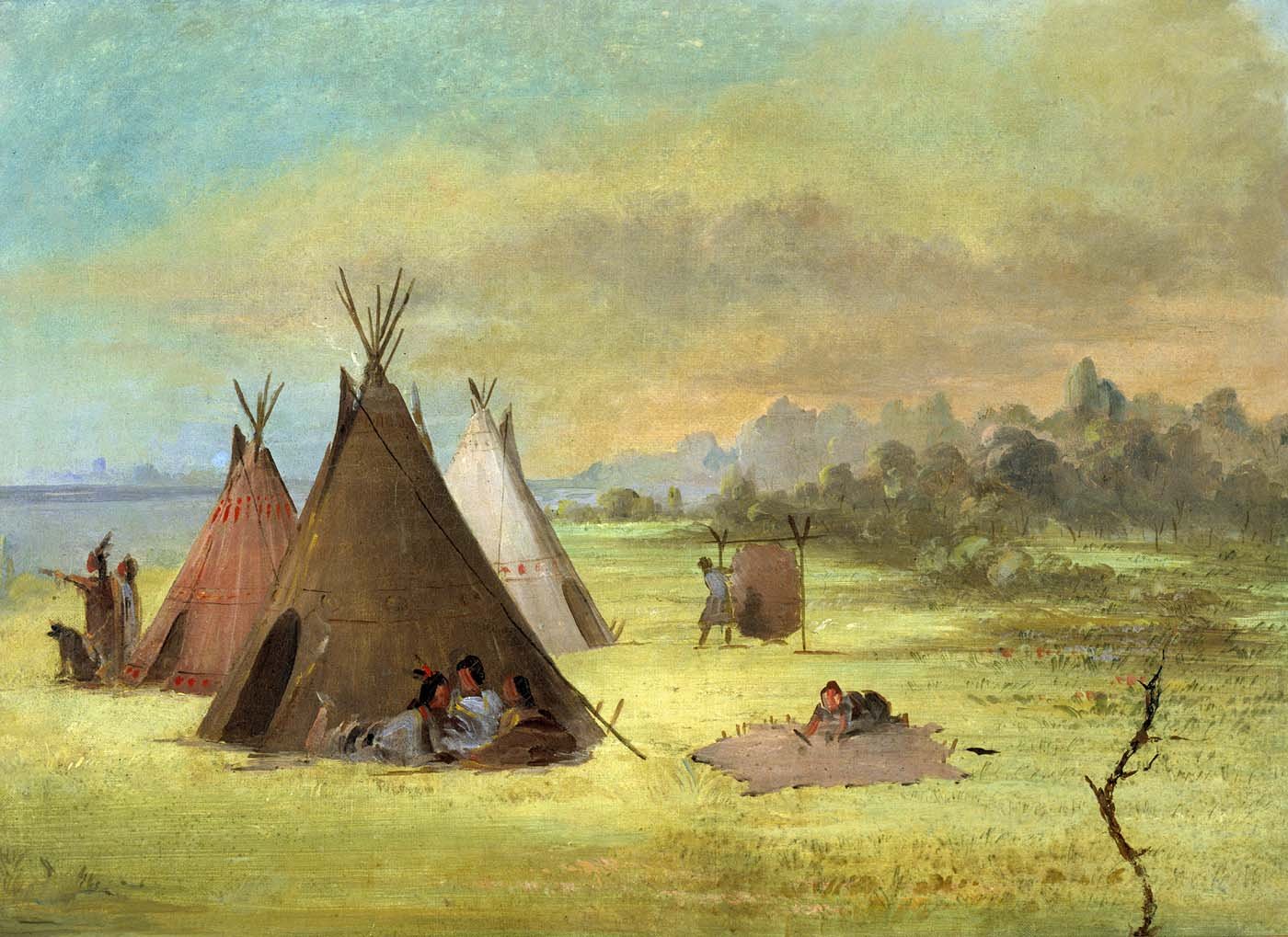 This is to give you a sense of how aware I am of Kiowa habits and behaviors, but not only Kiowa also Cherokee since I've had the fortunate circumstance of growing up within both cultures and moving back and forth between Lawton and Tahlequah in various forms throughout my life. These landscapes (Southern Plains and Ozark Hills) are not only imprinted in my memory, but my fiction as well.When this individual from Twitter mentioned "hyperlocal" as a description of my writing, I started to think about these nuanced cultural practices, behaviors, and perspectives, and how it was born from "writing what I know." And I think there can a tremendous benefit to this form of regionalism. What I do isn't any different in theory to Faulkner's depiction of the South during his time.Readers crave escapism. And at the onset of using a term like escapism there is an immediate interpretation of needing "to escape from reality" as a coping mechanism. But I would argue readers are more interested in engaging with creative work to find a reflection of themselves so as to examine their own presence on this planet. They are interested in growth, whether this is a conscious or subconscious effort is an argument for another nerdy post, but all in all readers are looking for "safe" ways to examine their own condition. It is through compare and contrast we find new ways to behave. Sometimes these new behaviors are better and sometimes they are destructive. But we will survive by any and all creative means, so I believe readers are subconsciously looking for validation and simultaneously seeking new ways of survival.The hyperlocal is a great way to find a place to escape, and to find a different culture to observe so as to better understand our own behavior. For me, this dynamic is on the surface. I love change, and stagnation is deadly. I want to become different. I want growth. But for others there may be a subconscious reason for engaging with the hyperlocal. The writing will resonate with them and they can't pinpoint why--just that there is something appealing about it.The means I use in which to tap into this dynamic? Is hyperlocal.
This is to give you a sense of how aware I am of Kiowa habits and behaviors, but not only Kiowa also Cherokee since I've had the fortunate circumstance of growing up within both cultures and moving back and forth between Lawton and Tahlequah in various forms throughout my life. These landscapes (Southern Plains and Ozark Hills) are not only imprinted in my memory, but my fiction as well.When this individual from Twitter mentioned "hyperlocal" as a description of my writing, I started to think about these nuanced cultural practices, behaviors, and perspectives, and how it was born from "writing what I know." And I think there can a tremendous benefit to this form of regionalism. What I do isn't any different in theory to Faulkner's depiction of the South during his time.Readers crave escapism. And at the onset of using a term like escapism there is an immediate interpretation of needing "to escape from reality" as a coping mechanism. But I would argue readers are more interested in engaging with creative work to find a reflection of themselves so as to examine their own presence on this planet. They are interested in growth, whether this is a conscious or subconscious effort is an argument for another nerdy post, but all in all readers are looking for "safe" ways to examine their own condition. It is through compare and contrast we find new ways to behave. Sometimes these new behaviors are better and sometimes they are destructive. But we will survive by any and all creative means, so I believe readers are subconsciously looking for validation and simultaneously seeking new ways of survival.The hyperlocal is a great way to find a place to escape, and to find a different culture to observe so as to better understand our own behavior. For me, this dynamic is on the surface. I love change, and stagnation is deadly. I want to become different. I want growth. But for others there may be a subconscious reason for engaging with the hyperlocal. The writing will resonate with them and they can't pinpoint why--just that there is something appealing about it.The means I use in which to tap into this dynamic? Is hyperlocal.
Support a Native owned Etsy shop, Allies United, where I offer unique merch for allies of social justice movements, like MMIW, Native Lives Matter and Black Lives Matter. Take a look inside my Etsy shop here: etsy.com/shop/AlliesUnited.
(Works Cited: Both images were borrowed from wikimedia)
Tuning into the Nuances of the Void
There are two things most dangerous: apathy and stagnation. For me? The former leads to the latter. It's a cycle of violence I've always struggled to overcome. It's like when I'm gourd dancing with my family, and I'm trying to predict by cadence and rhythm the switching of the beat so I can anticipate the appropriate next move--a move which keeps me in sync with my community but ultimately with my choices.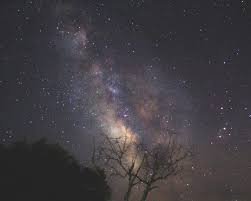 So that's a blend of artistry and pseudo-intellectualism to say something very simple: I get bored easily. I'll save the deep psychological reading of this behavior to my haters. They're likely more in tune with its nuances anyway.There are times in my life where I live in life and throw myself into passions deep and plentiful and I'm so deep in the subconscious I don't even have to breath. I've mutated, growing gills to pick up words and metaphors and I twist them into a story. Story gives me life.
So that's a blend of artistry and pseudo-intellectualism to say something very simple: I get bored easily. I'll save the deep psychological reading of this behavior to my haters. They're likely more in tune with its nuances anyway.There are times in my life where I live in life and throw myself into passions deep and plentiful and I'm so deep in the subconscious I don't even have to breath. I've mutated, growing gills to pick up words and metaphors and I twist them into a story. Story gives me life. Then there are times in my life where the void has no echo and the sound of my voice carries only inches from my mouth. If I screamed it would carry further, but I don't scream anyway so that doesn't matter. When the stagnation grows up my feet and grabs my ankles, through my veins and into my throat, my voice is lost. In desperation I can see apathy moving toward me like dark matter carrying a wave of asteroids ready to crush me. And you say the void has no noise. But it's loud. Louder than me, which is loud enough, and is the only decibel of importance.Then by sheer willpower, I lift my head, look at the computer screen, and write.
Then there are times in my life where the void has no echo and the sound of my voice carries only inches from my mouth. If I screamed it would carry further, but I don't scream anyway so that doesn't matter. When the stagnation grows up my feet and grabs my ankles, through my veins and into my throat, my voice is lost. In desperation I can see apathy moving toward me like dark matter carrying a wave of asteroids ready to crush me. And you say the void has no noise. But it's loud. Louder than me, which is loud enough, and is the only decibel of importance.Then by sheer willpower, I lift my head, look at the computer screen, and write.
Susceptibility to Structuralism's Manipulation of Self-Preservation
I like to think I'm too smart to be manipulated. I have a Master's Degree. I'm an avid reader and writer. Critical and creative thinking is my business. Then I attend one of those Hollywood productions (of the better variety, like Life of Pi), and despite my knowledge of all those structural techniques I still find myself being moved, with the simple use of music and cinematography. What?! No. Not me.
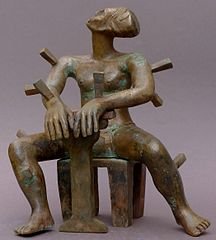 Does that make us susceptible? I don't know...maybe. Where it becomes dangerous is on the sociopolitical landscape. I ask myself this questions from time to time: How can people stay narrow minded? If I'm in a grumpy mood, I might think people just don't have the intelligence to witness dynamics in the macro. On an average day, I think people don't have access to an educational system to give them opportunity to think critically about their social situations. But in an age when you can gather an Associates Degree education on any subject through the use of YouTube, then that theory goes out the window. Then if you also consider how pop culture continuously offers people opportunities to think critically about serious issues. It starts to seem like people are choosing to be susceptible.
Does that make us susceptible? I don't know...maybe. Where it becomes dangerous is on the sociopolitical landscape. I ask myself this questions from time to time: How can people stay narrow minded? If I'm in a grumpy mood, I might think people just don't have the intelligence to witness dynamics in the macro. On an average day, I think people don't have access to an educational system to give them opportunity to think critically about their social situations. But in an age when you can gather an Associates Degree education on any subject through the use of YouTube, then that theory goes out the window. Then if you also consider how pop culture continuously offers people opportunities to think critically about serious issues. It starts to seem like people are choosing to be susceptible.
Nothing we do is that simple. It'd be great if we could just end there. There is something resonate about thinking, "People are inherently smart enough to broaden their intellectual perspective, but choose to stay susceptible," and in a certain sense it's true but there's a little more to it.
Your existence is dependent on being accepted by a certain group of people. If the majority of the people in your family and circle of friends are racist, homophobic, domineering, and destructive, then in order for you to survive you must accommodate those values so as to retain connection to the people who have shown you love and support your entire life. Yeah, ideally we would be brave and do the work to change those family members, but most people are not thinking about bravery, people think about survival.
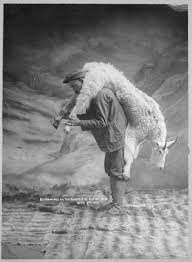 Self-preservation will dictate that you will conform to your surroundings. We see this all the time. A woman stays in a relationship with a guy who has a lower intelligence and she will keep herself dumb. Why? For love. We're social animals and need connections with other people. Unless you have Aspersers Syndrome like me and are socially inept, then you're going to conform.
Self-preservation will dictate that you will conform to your surroundings. We see this all the time. A woman stays in a relationship with a guy who has a lower intelligence and she will keep herself dumb. Why? For love. We're social animals and need connections with other people. Unless you have Aspersers Syndrome like me and are socially inept, then you're going to conform.
People are choosing susceptibility out of survival. In our society, you really have to work to stay ignorant, you have to work hard to dehumanize entire groups.
So outside of self-preservation, why would we spend so much energy on justifying the most negative parts of ourselves? At this point, Girard's theory of the memesis makes the most sense. Largely, it makes sense to me because it coincides with my ideas of self preservation and modalities of collectives staying unified.
I'm not going to break down Girard in it's entirety. You'll have to do that work, but in short Girard posits individuals and groups mimic desire and desire creates conflict between individuals and groups (mimetic rivalry) attempting to satisfy the same desire. This goes beyond resources. It rolls over into abundance as well. I would even argue mimesis is more intense in abundance. Maybe mimesis doesn't even start until human populations reach abundance. But I should save that argument for another nerdy post. Oh, yeah, in short... To calm the conflict (the problems of conflict), we create a scapegoat. So we place all the blame on something, someone, somebody, some people, anything that will unify the group who were fighting amongst themselves. We sacrifice the scapegoat and then we worship the scapegoat.
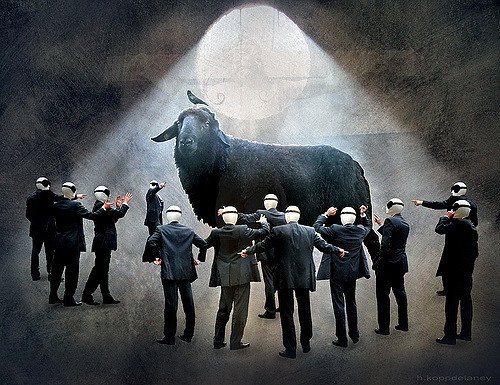
I'm going to take Girard one step further. I don't think it's only desire that triggers the scapegoat mechanism. Yes, desire creates conflict (I'll give him that). But it's the stress triggered by the conflict that triggers the scapegoat mechanism in people. So I argue that stress is the primary trigger for scapegoating. But more or less, stress will keep us narrow minded. It forces us into a position to find a scapegoat (i.e., racism, sexism, homophobia, etc.). All this is archaic, but we do it everyday. Remember how I started this post? With the Hollywood structuralism comment? Yeah, it's the same deal.
When you get stressed at work, what do you do? Do you reflect on your own inadequacies? Make adjustments? Move forward? Maybe if your degree is in psychology, but for most of us we find someone else in the office to blame. We see this all the time as well. There are changes at the office, and then all the workers panic, and then one person starts getting bullied more so than others in the group. Said individual starts to consider changing jobs. They quit. Then you rehearse who that person was and what they were like and how you didn't like them over and over and over and over and over and over, you keep talking about the poor fool you sacrificed and sent into the wilderness. Yup, you were made into a social dupe by one simple structural technique: stress.
Does that mean you're keeping yourself susceptible? Or you are not intelligent enough to see through the veil? No. That's not the case. You've been played by those who structure society in the same way Hollywood structures movies. Play the right music, show the right cinematography, and like magic: You follow.
Support a Native owned Etsy shop, Allies United, where I offer unique merch for allies of social justice movements, like MMIW, Native Lives Matter and Black Lives Matter. Take a look inside my Etsy shop here: etsy.com/shop/AlliesUnited.
Humanitarian Effort for the Rich: Hollywood's Humanizing Project
When I watch movies, I tend to watch independents. Sometimes I'll watch the Hollywood independents, if it looks like they're only going to modestly apply structuralism. I like to think I'm savvy. I don't want to feel like I'm a monkey watching for bananas, which Hollywood has turned into a science. If you don't know how structuralism has put your brain on repeat for the last five decades, hit me up on the comments below and I'll explain. This post is for Hollywood's newest charity: Save the Rich!I've noticed this trend for quite some time. Hollywood likes to showcase the uber-wealthy as their protagonists.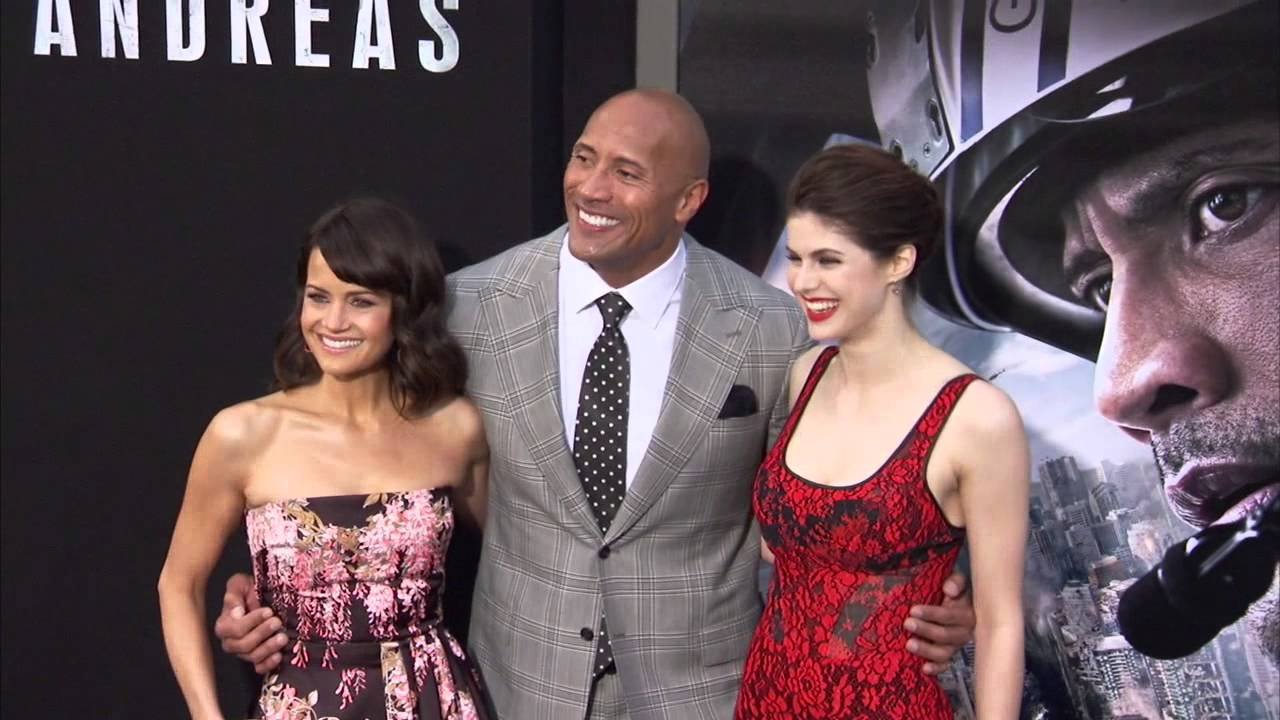 So my sons came back from Wal-Mart with the movie San Andreas. It stars Dewayne Johnson, otherwise known as The Roc. I'm not prone to watching these big Hollywood productions, but my sons were excited to watch the movie and it was entertaining enough. I watched to the end. I thought I was going to predict a few things and it was nice to find out I was wrong. I'm so overly focused on structuralism that sometimes I miss the connections.Then there was the hyper masculine motif that could not be balanced by vain attempts to masculinize one female character. Ultimately, it was a damsel in distress production. Nothing new there.
So my sons came back from Wal-Mart with the movie San Andreas. It stars Dewayne Johnson, otherwise known as The Roc. I'm not prone to watching these big Hollywood productions, but my sons were excited to watch the movie and it was entertaining enough. I watched to the end. I thought I was going to predict a few things and it was nice to find out I was wrong. I'm so overly focused on structuralism that sometimes I miss the connections.Then there was the hyper masculine motif that could not be balanced by vain attempts to masculinize one female character. Ultimately, it was a damsel in distress production. Nothing new there.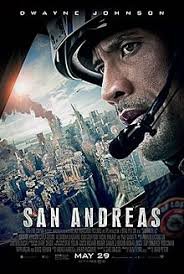 What stood out to me most was all the poor people running around the collapsing cities, and for some reason none of those impoverished people could lead in this storyline. They had to make the main characters uber-wealthy, with jet setting and mansion living. They dined in high rise buildings and took first class airplane trips to volleyball games. These were seven figure folks. And as they ran past all those poor people in the cities (the ones who got crushed by buildings and water), I kept trying my hardest to empathize for these uppity rich people as they tried to escape with their lives. Because somehow their lives were so much more important than the lives of the average people who were trying to escape the same natural disaster. So much more important than our lives that the cameras were trained on them.So Hollywood wants you to feel sorry for the rich. Why would they be humanizing a small group of people who exploits everyone else on the planet? I'm sorry. I'm not trying to be callous. But why do the rich get this privileged treatment, while impoverished people are constantly demonized and dehumanized by news and popular media.Lucky, for my sons, they have a father who can teach them how to see through the veil. Is it just me? Or have you also noticed all the hyper wealthy characters on these movies? It seems like every movie has some type of rich person as the lead or emotionally connected to the lead person. It is so blatant it makes me wonder why Hollywood is working so hard to humanize this select group of people.
What stood out to me most was all the poor people running around the collapsing cities, and for some reason none of those impoverished people could lead in this storyline. They had to make the main characters uber-wealthy, with jet setting and mansion living. They dined in high rise buildings and took first class airplane trips to volleyball games. These were seven figure folks. And as they ran past all those poor people in the cities (the ones who got crushed by buildings and water), I kept trying my hardest to empathize for these uppity rich people as they tried to escape with their lives. Because somehow their lives were so much more important than the lives of the average people who were trying to escape the same natural disaster. So much more important than our lives that the cameras were trained on them.So Hollywood wants you to feel sorry for the rich. Why would they be humanizing a small group of people who exploits everyone else on the planet? I'm sorry. I'm not trying to be callous. But why do the rich get this privileged treatment, while impoverished people are constantly demonized and dehumanized by news and popular media.Lucky, for my sons, they have a father who can teach them how to see through the veil. Is it just me? Or have you also noticed all the hyper wealthy characters on these movies? It seems like every movie has some type of rich person as the lead or emotionally connected to the lead person. It is so blatant it makes me wonder why Hollywood is working so hard to humanize this select group of people.
Support a Native owned Etsy shop, Allies United, where I offer unique merch for allies of social justice movements, like MMIW, Native Lives Matter and Black Lives Matter. Take a look inside my Etsy shop here: etsy.com/shop/AlliesUnited.
Seeing through Layers like Blankets on a Cold Night
My father was am immigrant from Mexico. My mother a full blood Kiowa/Cherokee from Oklahoma. They worked the peanut and cotton fields when my sisters and I were young. I remember ducking the large rolling water sprayers in the fields; I remember the heat coming from the dirt onto my bare feet; and I remember living in abandoned farm houses in the Oklahoma fields. Let me tell you about cold nights. No, better yet, let me tell you about the warmth you can have from the thin layer of a blanket.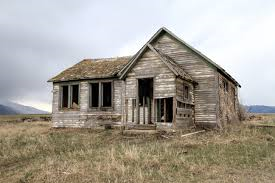 As I make progress through the revision stage of my novel, Uncle Called Him Spider, I visualize odd and peculiar moments in my life. Here I am thinking about point of view, analyzing the spaces between first person narrative and third person limited omniscience, and I start to make the comparison of that space to the thin layer of a blanket on a cold night. Then I remember the farm houses.Odd how the memory works.So a few days ago I was living through a fictional space in my mind where I envisioned someone asking me, "Why did you write Uncle Called Him Spider in third person limited omniscient instead of first person?" They would go onto explain how the two forms aren't very far apart structurally. So many great novels are written in the first person. Yes, I actually visualize conversations like this. And, yes, I'm only a breath away from insanity, but only the good writers are.
As I make progress through the revision stage of my novel, Uncle Called Him Spider, I visualize odd and peculiar moments in my life. Here I am thinking about point of view, analyzing the spaces between first person narrative and third person limited omniscience, and I start to make the comparison of that space to the thin layer of a blanket on a cold night. Then I remember the farm houses.Odd how the memory works.So a few days ago I was living through a fictional space in my mind where I envisioned someone asking me, "Why did you write Uncle Called Him Spider in third person limited omniscient instead of first person?" They would go onto explain how the two forms aren't very far apart structurally. So many great novels are written in the first person. Yes, I actually visualize conversations like this. And, yes, I'm only a breath away from insanity, but only the good writers are.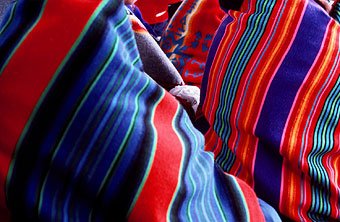 It's a good question. I'm glad the fictive personality in my mind asked. Why third over first? I think it goes back to the blanket on the cold night. So what does first person perspective do? It pulls the reader in close. You are directly inside the narrator's mind and you are watching what the narrator watches. You only experience what the narrator feels. You are under the blanket.So you're going to argue third person limited does the same thing. But I'm going to disagree with you. It does put you, the reader, inside the main character's mind. Yes, you feel what she feels and you get to hear her thoughts. But there is one thing first person doesn't offer: Freedom.With just a thin layer of distance, third person limited omniscient gives the reader a power lost to the first person POV. Because you are subconsciously noticing the "he said, she said" aspect of the writing, you are then subconsciously implementing the "he said, she said" mentality. Meaning? You cast judgment more readily. You are less likely to identify with the main character and more likely to criticize her.
It's a good question. I'm glad the fictive personality in my mind asked. Why third over first? I think it goes back to the blanket on the cold night. So what does first person perspective do? It pulls the reader in close. You are directly inside the narrator's mind and you are watching what the narrator watches. You only experience what the narrator feels. You are under the blanket.So you're going to argue third person limited does the same thing. But I'm going to disagree with you. It does put you, the reader, inside the main character's mind. Yes, you feel what she feels and you get to hear her thoughts. But there is one thing first person doesn't offer: Freedom.With just a thin layer of distance, third person limited omniscient gives the reader a power lost to the first person POV. Because you are subconsciously noticing the "he said, she said" aspect of the writing, you are then subconsciously implementing the "he said, she said" mentality. Meaning? You cast judgment more readily. You are less likely to identify with the main character and more likely to criticize her.
"The omniscient narrator is a bizarre technique, when you think about it, and no one uses it much anymore. But for the novels I want to write, it's the only approach that makes sense to me." -- by Min Jin Lee
Why? It's space. Being on the outside of the blanket you still feel the cold night, while the main character is cozy under the blanket. There's enough distance to analyze and criticize situations as the main character moves through the storyline. In essence, it empowers the reader to make their own conclusions without the main character trying to convince them otherwise.I'm going to take this a little deeper--just for food for thought. I think it may be an issue of control. If an author wants you to think a certain way about a character she will do anything and everything to persuade you, like using first person narration. Now, don't get upset at me for making this claim. If you go read the three free short stories on my website, you'll find three first person short stories. I write first person. But as I think about the novel I'm writing I can't help but wonder how much of it has to do with authorial control over the reader. Maybe I'm in a space of letting go, ready to give readers their freedom so I can have my own. Or...maybe I think way too much about this shit. :)
Support a Native owned Etsy shop, Allies United, where I offer unique merch for allies of social justice movements, like MMIW, Native Lives Matter and Black Lives Matter. Take a look inside my Etsy shop here: etsy.com/shop/AlliesUnited.
(The images used in this post were borrowed from Wikimedia and Wikipedia)
(Images were borrowed from pexels.com and terrain.org)
Arachnid Vs Reptilian: The Thirst for Brutality in Controversial Topics
The fangs of a snake might seem to overpower the fangs of a spider, and on the surface it can appear as though the match is uneven. But we can't forget the impulsiveness of the snake and the patience of the spider. And we must remember a black widow sits nicely on the tongue of a viper. Its patience is beyond the fast acting poison in its bite.https://youtu.be/Bt1DDVl5IJAWe like to think of ourselves as civilized. We'd never want to watch two creatures battling it out to the death. And it would true. We don't want to see it. So why do we? Why do we turn on the news and watch as people oppress other people, playing out the dramas of the worst parts of the human condition?This post came about by two interactions. One was with my friend Brandon. When we were walking the track at Northeastern State University here in Tahlequah, Oklahoma, he asked me about my novel. And oh did I tell him. That's one question you have to be careful of. Ask me about my writing and I'm going to talk incisively for about fifteen minutes straight. I'm sure he regretted the question after he asked. The other? It was from an exchange with a fellow blogger here on my website. They left a comment on my post about handling controversial topics in literature, Biting the Hand that Feeds Us: Handling Controversial Topics in Fiction, Art, and Life. Again I started rambling with this individual. I'm a relatively quiet person until you ask me to talk about literature, and then I'm annoyingly vocal.So why is it? Why do we love controversial topics on the news, in books, and at the movies? On the surface we might appear to be diabolical and love to feed off negative energy, and to an extent that might be true for some of us, but ultimately there's more to it.
"There are spiders whose bite can cause the place bitten to rot and to die, sometimes more than a year after it was bitten. As to why spiders do this, the answer is simple. It's because spiders think this is funny, and they don't want you ever to forget them.” -- Neil Gaiman
My novel, Uncle Called Him Spider, features the battle of arachnid (Dean) versus reptilian (Snow). My protagonist (Dean) is arachnid and my antagonist (Snow) is reptilian. Both are unlikable. And to a certain extent you empathize with both as the novel progresses. Since Dean is the protagonist you have a little more reason to root for him but by his ruthless actions you don't really want to. Since you know less about Snow you want to root for her but she is more ruthless than Dean. Seemingly if you knew more about her you might find yourself at a loss of who to champion.So what do you do? The same thing you do when watching a spider and snake fight. As you watch, you can't help but have empathy for both and not want either to die in the battle. But do you turn away? No, you don't. You keep watching. Why? Is it because you want to know the outcome? That would be part of it. But I argue there's a little more.
“To the unspoiled, even a snikebite is a loving kiss. But to the spoiled even a loving kiss is a snake bite.” -- Mikhail Naimy
There's a missing component to modern literary novels. They're soft. Literary novelist are supposed to hold a mirror to society and force us to confront issues like racism. You find more value in a Hollywood movie like Get Out, which confronts liberal racism through the Horror genre. Are contemporary literary novelists pandering? Do they seek to conform to ideological versions of society so as to not insult a privileged and weak-minded audience? Or are literary writers cowards who underestimate the pallet of the modern literary reader?I know, you're wondering why we watch the spider and snake battle to the death. It's because we can see ourselves reflected in the battle. We're looking at a mirror, and by watching the brutality on the news like the brutality of two predators fighting to the death, we have the opportunity to learn something about ourselves. Its introspection we thirst for. We need to see the worst parts of ourselves reflected in others. There is no other way to purge our own bloodlust. And we literary writers should be brave enough to satisfy our readers with the opportunities to self-reflect.
Main Character Slam, Drop, Kick!
Revision is a little punk b#?ch! There I am toiling away on the second draft, almost to the end of the novel and starting to think about characters in the novel (mentally preparing for the "sweeps" portion of my revision process), and then I come to realize my main character is an asshole.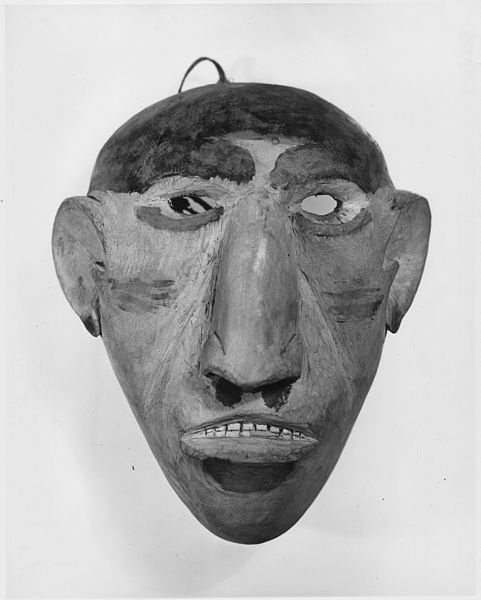 I toil, yes. Right now I'm busting down walls of action and scene selection as I move through the more tangible portion of the novel. The second draft for me is about pulling out concrete details. I don't get to the inner monologue of the narration until the start of my third draft, which I affectionately call "sweeps" because I'll repeatedly sweep over the text and wipe away unnecessary information while adding more details. The sweeps portion of my revision process is when the story begins to look like a real story.So I had already come to the determination that my main character, Dean's, main flaw was that he didn't trust people. I had concluded he only trusted his wife's opinion so when his coworkers came to him about concerns he didn't trust what they were saying. Now I don't hit readers over the head with this aspect of his character. Through Dean's repeated second guessing, the reader eventually realizes this flaw: lack of trust. I do this so readers will pick up his character flaw only moments before the climax of the novel. Then the reader understands his final actions a little better.
I toil, yes. Right now I'm busting down walls of action and scene selection as I move through the more tangible portion of the novel. The second draft for me is about pulling out concrete details. I don't get to the inner monologue of the narration until the start of my third draft, which I affectionately call "sweeps" because I'll repeatedly sweep over the text and wipe away unnecessary information while adding more details. The sweeps portion of my revision process is when the story begins to look like a real story.So I had already come to the determination that my main character, Dean's, main flaw was that he didn't trust people. I had concluded he only trusted his wife's opinion so when his coworkers came to him about concerns he didn't trust what they were saying. Now I don't hit readers over the head with this aspect of his character. Through Dean's repeated second guessing, the reader eventually realizes this flaw: lack of trust. I do this so readers will pick up his character flaw only moments before the climax of the novel. Then the reader understands his final actions a little better.
"Developing a character with genuine depth requires a focus on not just desire but how the character deals with frustration of her desires, as well as her vulnerabilities, her secrets, and especially her contradictions." -- By David Corbett
Then I'm thinking this through, getting ready to begin my "sweeps" stage of revision, and I realized not only does he not trust people but the way he deals with this mistrust is by being critical. So I'm thinking through the internalization of a third person point of view, which is how the novel is written, and I'm simultaneously reading Haruki Murakami's Kafka on the Shore (we all know Murakami is the king of internal monologue), and I'm asking myself, "So how should I gear Dean's internal monologue?" Then I asked myself, "How would he talk to his coworkers if he had no filter?" All of a sudden I heard Dean start to be judgmental. In fact, he was so harsh I could only conclude one thing: Dean's an asshole.
"Great fiction is fueled by bad decisions and human weakness." -- By Kristen Lamb
It's kinda scary because he's loosely based on myself. That must mean I'm an asshole. I'll have to mediate on that one and get back to you later. For now, Dean is the asshole (not me, well, maybe me), and he will be an unlikable character. So for some strange reason that gets me excited. I like the idea of writing an unlikable character. More evidence I might be an asshole. But the reason I'm excited to write an unlikeable character is for the challenge. I've not had a character who came to fruition as so distinct as unlikeable. This is an exciting new avenue for me.So I guess it'll be. I'm writing about an asshole, who may or may not be like myself, but either way I'm excited for the "sweeps."
Support a Native owned Etsy shop, Allies United, where I offer unique merch for allies of social justice movements, like MMIW, Native Lives Matter and Black Lives Matter. Take a look inside my Etsy shop here: etsy.com/shop/AlliesUnited.
(Image was borrowed from Wikimedia Commons)
#1 Writing Rule: Be Teachable
We writers area equal parts ego and vulnerable. The cliché is to develop a "tough skin" over the years and be able to take criticism. But we all think we're geniuses, and we are. Brilliant beasts who are magical at hiding our softest parts behind a shield of "I already know" and "You just don't understand the work." "Humble yourself, Oscar," often goes through my mind. One thing I've learned over the years of writing and revision and rejection and submission and rejection again and writing again and revision again is this: Be teachable.
"Humble yourself, Oscar," often goes through my mind. One thing I've learned over the years of writing and revision and rejection and submission and rejection again and writing again and revision again is this: Be teachable.
"The ultimate aim of the ego is not to see something, but to be something," By Muhammad Iqbal - Pakistani Poet
I say that and I also offer writers advice which will sound like a schism (and it is), but we need to retain our ego. We need to always remember we are undiscovered geniuses. We are the next brilliant thing to hit the writing world. We have the ability to transform this planet into something more habitable. And ultimately that's why we sit here everyday and write. To end oppression. To open up people's minds. To give readers a new way to look at life. Our genius is geared toward benevolence. Or at least that's what we tell ourselves, and I suggest we continue to do so.But at the same time we must be teachable. We must be able to take advice from other writers. It's the difference between wrestling against your ego and mastering it. When you are in control, you understand talent and skill must be executed with discipline.And the only way for a writer to obtain discipline is by listening to others.
Support a Native owned Etsy shop, Allies United, where I offer unique merch for allies of social justice movements, like MMIW, Native Lives Matter and Black Lives Matter. Take a look inside my Etsy shop here: etsy.com/shop/AlliesUnited.
(The above image was borrowed from Flickr)
Capricorn Mind on Structure and Writing Process
"I gotta keep my Capricorn mind straight," said the planet of Saturn to the writer writing this post. Okay, so that first sentence had a weird third person shift--almost like a third person shift to a different third person gear, but the first third person perspective was oddly different from the latter, which was equally bizarre but uniquely awkward. See what I mean? I do need to keep this Capricorn mind straight. Saturn was right.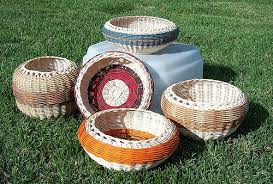 Everyone goes into their writing projects differently. No one does it the same so it can be hard to offer advice on how to start the process of writing on something as large as a novel. Many writers like writing blind. Meaning, they get the idea for the story and just start writing wherever the story begins in their mind and as they write the storyline will magically unfold. Well, not magically, but as you write then a sequence tends to come to mind so you follow the sequence. Then you revise and insert more elements to the story as they manifest along the way. That's writing in the dark.I do like writing in the dark for short stories. There seems to be an urgency to short stories that forces me to write it all down as fast as possible. People also call this the vomit method. I prefer to say writing in the dark. Regurgitation is not something I want to associate with my writing process. Or any of my process really.But for the novel? Maybe you've come up with a good idea. You've been wanting to write it for years, maybe decades, and you've not yet come to start the process. Writing a novel in the dark is possible. Many writers have done so and like the method. But I can't seem to do it.
Everyone goes into their writing projects differently. No one does it the same so it can be hard to offer advice on how to start the process of writing on something as large as a novel. Many writers like writing blind. Meaning, they get the idea for the story and just start writing wherever the story begins in their mind and as they write the storyline will magically unfold. Well, not magically, but as you write then a sequence tends to come to mind so you follow the sequence. Then you revise and insert more elements to the story as they manifest along the way. That's writing in the dark.I do like writing in the dark for short stories. There seems to be an urgency to short stories that forces me to write it all down as fast as possible. People also call this the vomit method. I prefer to say writing in the dark. Regurgitation is not something I want to associate with my writing process. Or any of my process really.But for the novel? Maybe you've come up with a good idea. You've been wanting to write it for years, maybe decades, and you've not yet come to start the process. Writing a novel in the dark is possible. Many writers have done so and like the method. But I can't seem to do it.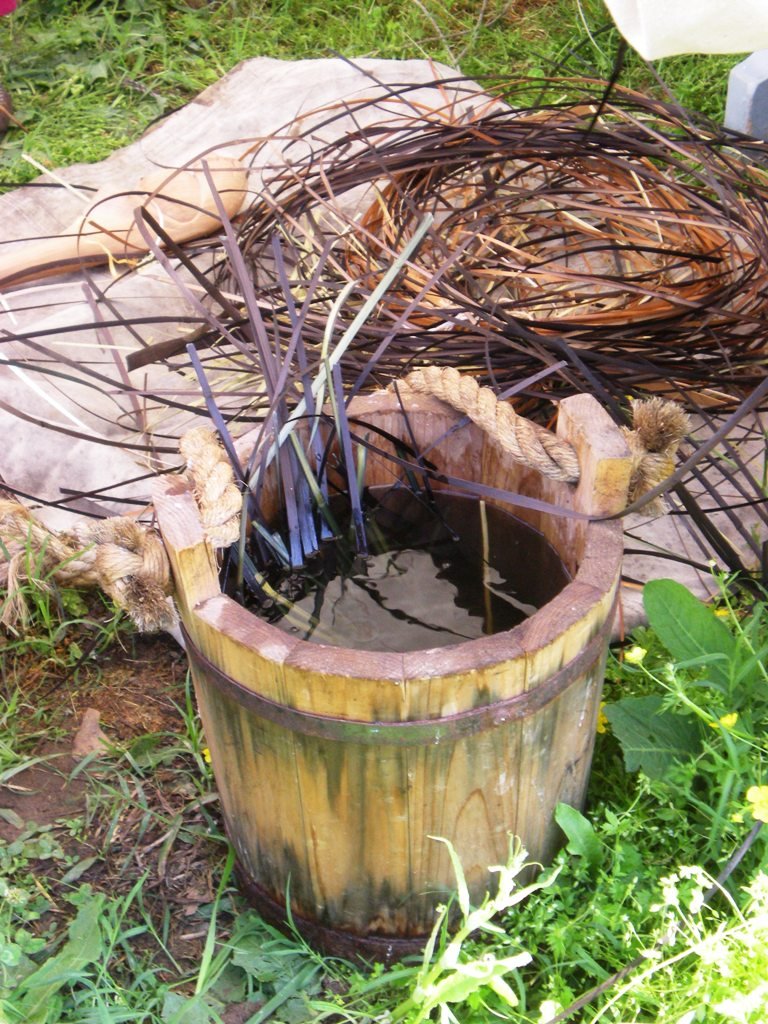 Writing a novel has so many elements to it. Not only do you have the main plot, but you also have a series of subplots that can either mirror the main plot, highlight a trait of the main character, or be a complete escape from the main plot so as to break the tension or give the reader an opportunity to breath (while simultaneously showing a new side to the main character). All these subplots weave in and out of the main plot making for a beautifully constructed basket at the end.If you want to make beautiful art, a beautiful basket, you have to be purposeful with the way you weave each strand (subplot) against the basket's base (main plot). Because this process takes so much mental energy and careful planning, I like to outline my novels. Now I don't use an essay style outline. That would kill my energy quick. I can see you now. You're throwing your hands in the air and groaning, saying, "Oscar, I'm not going back to high school tactics to write a book." And I couldn't agree with you more.
Writing a novel has so many elements to it. Not only do you have the main plot, but you also have a series of subplots that can either mirror the main plot, highlight a trait of the main character, or be a complete escape from the main plot so as to break the tension or give the reader an opportunity to breath (while simultaneously showing a new side to the main character). All these subplots weave in and out of the main plot making for a beautifully constructed basket at the end.If you want to make beautiful art, a beautiful basket, you have to be purposeful with the way you weave each strand (subplot) against the basket's base (main plot). Because this process takes so much mental energy and careful planning, I like to outline my novels. Now I don't use an essay style outline. That would kill my energy quick. I can see you now. You're throwing your hands in the air and groaning, saying, "Oscar, I'm not going back to high school tactics to write a book." And I couldn't agree with you more. Here's what I do. I use One Note. If you haven't used it then I'd give it a try, or you can use something similar. What One Note gives me are tools I can use to creatively engage with my writing. Not only can I free write in random boxes, and then move those boxes around, but I can also draw out graphs. Hand made line graphs, not the standard graphs made for reports. I need something that makes sense to the flow of my story. I use the drawing tool and I'll draw zigzag lines leading up to the apex or crescendo of the story. Then I use text next to each peak and valley so as to mark what happens in the story. Typically, each peak and each valley represents a chapter.So when you go into outlining it doesn't have to be an English high school class all over again. You can get creative with it. But what I find? It helps me guide the story. I used this method with the novel I'm revising now, Uncle Called Him Spider, and I've started the outline of a new novel (which is why I'm writing this post). I'm about seven chapters deep into the outline of the new novel. I know the ending and I know the beginning, and I'm using the weaving method to create the middle. I actually enjoy this part of the process. It's the planning part, which comes from my Capricorn mind.
Here's what I do. I use One Note. If you haven't used it then I'd give it a try, or you can use something similar. What One Note gives me are tools I can use to creatively engage with my writing. Not only can I free write in random boxes, and then move those boxes around, but I can also draw out graphs. Hand made line graphs, not the standard graphs made for reports. I need something that makes sense to the flow of my story. I use the drawing tool and I'll draw zigzag lines leading up to the apex or crescendo of the story. Then I use text next to each peak and valley so as to mark what happens in the story. Typically, each peak and each valley represents a chapter.So when you go into outlining it doesn't have to be an English high school class all over again. You can get creative with it. But what I find? It helps me guide the story. I used this method with the novel I'm revising now, Uncle Called Him Spider, and I've started the outline of a new novel (which is why I'm writing this post). I'm about seven chapters deep into the outline of the new novel. I know the ending and I know the beginning, and I'm using the weaving method to create the middle. I actually enjoy this part of the process. It's the planning part, which comes from my Capricorn mind.
Support a Native owned Etsy shop, Allies United, where I offer unique merch for allies of social justice movements, like MMIW, Native Lives Matter and Black Lives Matter. Take a look inside my Etsy shop here: etsy.com/shop/AlliesUnited.
 (Images Cited: The images above were borrowed from Wikimedia Commons, Flicr, and Pinterest)
(Images Cited: The images above were borrowed from Wikimedia Commons, Flicr, and Pinterest)
The Magic of Intermountain Youth Center
I said it before. The last grade I completed was the sixth grade. Then later in life I went on to obtain a Master's Degree. I think a lot of it had to do with riding waves. Not in the ocean. I've never been daring enough to take on those types of challenges. But riding waves of opportunity. Sometimes I look back and it's interesting to see how it all lined up and came to fruition, as though in symmetry, like musical notes being plucked from the strings of a guitar. In time and rhythm it can make a beautiful song.So how do you go from being a severe introvert to completing programs in higher education? A lot of luck. A lot of patience. I give most credit to one organization: Intermountain Youth Centers. They were once located throughout New Mexico and had a facility in Colorado, but now they operate out of Arizona only. They are a behavioral health organization, whose beginnings were in Native American communities. When NM state started funneling money toward certain facilities, a place like Intermountain, which specialized in helping Native American youth, started to get less and less funding. In the end, Intermountain was too narrowly focused for New Mexico, who wanted to fund the fewest and least expensive behavioral health facilities. I worked in Santa Fe.There's something about being placed in a position to be a mentor that can change the way you see the world. I was a very negative person. Life was hard and assumed it would always be. When Intermountain employed me to run "strength based" programming with Native youth, I started to change. I had to be a role model who showed positivity for days at a time. If I was going to help these young men, I would need to follow the "strength based" model closely. In other words, I was bought into the organization. I believed in its philosophy.What happened? I went from being so negative that most of people reading this post right now would have never associated with me. I was not the type to draw people in. In fact, I was pretty good at pushing people away and keeping people at a distance. From that, I turned into someone who was always filled with gratitude. I was so greatly changed by Intermountain that I'm still guided by its philosophy. And I haven't been with the organization since 2009. I mostly say good things to people. When someone is trying to draw out negativity, I tend to start saying positive things. Not that I don't have my bad days like everyone else. But for the most part I tend to usually be in a good mood and like to focus on solutions and problem solving rather than wallowing in the muck of self pity.
I give most credit to one organization: Intermountain Youth Centers. They were once located throughout New Mexico and had a facility in Colorado, but now they operate out of Arizona only. They are a behavioral health organization, whose beginnings were in Native American communities. When NM state started funneling money toward certain facilities, a place like Intermountain, which specialized in helping Native American youth, started to get less and less funding. In the end, Intermountain was too narrowly focused for New Mexico, who wanted to fund the fewest and least expensive behavioral health facilities. I worked in Santa Fe.There's something about being placed in a position to be a mentor that can change the way you see the world. I was a very negative person. Life was hard and assumed it would always be. When Intermountain employed me to run "strength based" programming with Native youth, I started to change. I had to be a role model who showed positivity for days at a time. If I was going to help these young men, I would need to follow the "strength based" model closely. In other words, I was bought into the organization. I believed in its philosophy.What happened? I went from being so negative that most of people reading this post right now would have never associated with me. I was not the type to draw people in. In fact, I was pretty good at pushing people away and keeping people at a distance. From that, I turned into someone who was always filled with gratitude. I was so greatly changed by Intermountain that I'm still guided by its philosophy. And I haven't been with the organization since 2009. I mostly say good things to people. When someone is trying to draw out negativity, I tend to start saying positive things. Not that I don't have my bad days like everyone else. But for the most part I tend to usually be in a good mood and like to focus on solutions and problem solving rather than wallowing in the muck of self pity.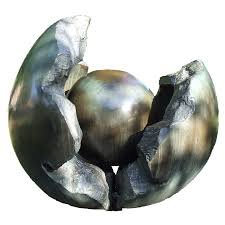 I was with Intermountain for about six years and it took the majority of that time to make the complete transformation. They say every cell in your body is made new by regeneration every seven years. I'd say it was pretty close to that mark. My DNA must have been changed in that space of time. I certainly don't feel like the person I was before Intermountain. Now that I'm back in my hometown of Tahlequah, Oklahoma it's interesting to see how hard it is for people who knew me before to let me change. I don't think people like to let other people change. But that'll have to be a post for another day.All in all: I'm lucky. I interact with people all the time, many in the latter years of their life, and they're miserable people. Ultimately, it's sad. I'm a firm believer in leading by example. My element of persuasion is just being myself. I'm not in the business of recruiting. Largely because it's counterproductive. The next time missionaries knock on your door see how fast you run to the back of the house.I see people who have good hearts allowing themselves to be swallowed by anger, frustration, and hatred. I wish I could give them my experiences at Intermountain so they'd have a chance to change for the better. We do the world service by just being positive and helping each other out. We have to trust and allow people to change on their own time.(Works Cited: Images above were borrowed from intermountcenters.com and maxpixel.com)
I was with Intermountain for about six years and it took the majority of that time to make the complete transformation. They say every cell in your body is made new by regeneration every seven years. I'd say it was pretty close to that mark. My DNA must have been changed in that space of time. I certainly don't feel like the person I was before Intermountain. Now that I'm back in my hometown of Tahlequah, Oklahoma it's interesting to see how hard it is for people who knew me before to let me change. I don't think people like to let other people change. But that'll have to be a post for another day.All in all: I'm lucky. I interact with people all the time, many in the latter years of their life, and they're miserable people. Ultimately, it's sad. I'm a firm believer in leading by example. My element of persuasion is just being myself. I'm not in the business of recruiting. Largely because it's counterproductive. The next time missionaries knock on your door see how fast you run to the back of the house.I see people who have good hearts allowing themselves to be swallowed by anger, frustration, and hatred. I wish I could give them my experiences at Intermountain so they'd have a chance to change for the better. We do the world service by just being positive and helping each other out. We have to trust and allow people to change on their own time.(Works Cited: Images above were borrowed from intermountcenters.com and maxpixel.com)
Tiny Trophies Alongside the Road
Getting bogged down in the muck is an artist's nightmare. You've done the initial work. Maybe you painted the paintings, recorded the songs, or wrote the novels, and then you have to take the creation and offer it to world. Just when you thought you were done. There's a million more hurdles.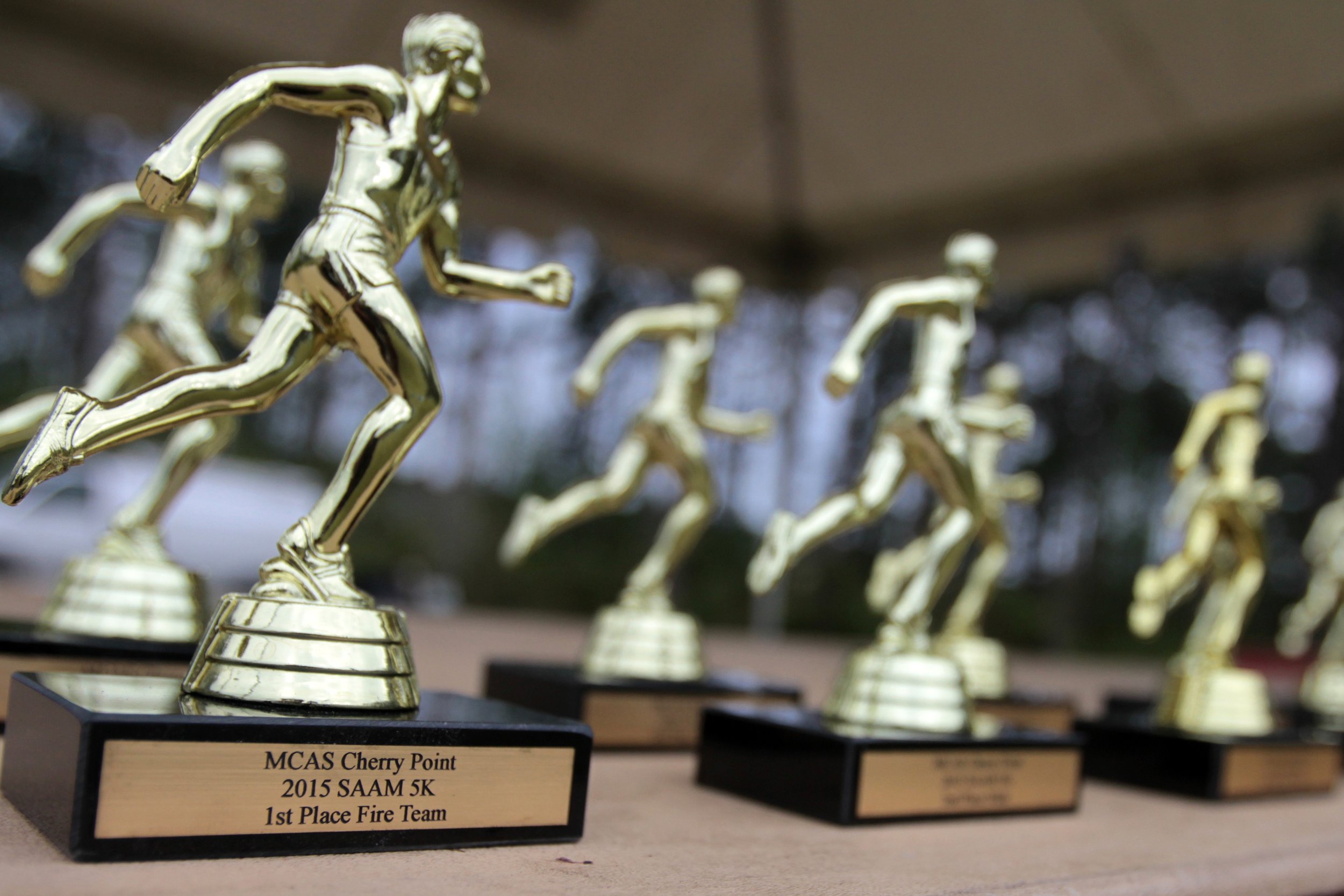 When I wrote short stories I had these tiny trophies of publication to remind myself to keep going. I'd have the excitement of getting published and then the hardcopy would come in and then I'd be excited again. Then I'd get to tell family and friends. So each short story publication offered multiple rewards which would give me the fuel to keep myself in the grind.Don't get me wrong. I love to write. The space is a meditative space which is not matched by any substance on the planet. I can truly leave this planet when I sit down to write. The rest of the harsh world disappears. I'm left with my thoughts and my imagination; both aimed at solving the world's problems. It's powerful.But I would be lying if I didn't admit to days when I wished I was writing short stories again. I'm revising my novel, Uncle Called Him Spider, and writing a novel is a much longer journey. A marathon. It's been two years. Two years of running. It's been longer since I had a short story published. I'm feeling such a void maybe I'll pull out one of my old short stories; one I hadn't published, and I'll send it in to a journal. You would think we artists can survive with no attention at all, because for so long we survive without any light. But for those of us still seeking a space to call our own, some consistent stream of give and take with an audience, we must stay viable by any means. And sometimes those are tiny trophies alongside the road.
When I wrote short stories I had these tiny trophies of publication to remind myself to keep going. I'd have the excitement of getting published and then the hardcopy would come in and then I'd be excited again. Then I'd get to tell family and friends. So each short story publication offered multiple rewards which would give me the fuel to keep myself in the grind.Don't get me wrong. I love to write. The space is a meditative space which is not matched by any substance on the planet. I can truly leave this planet when I sit down to write. The rest of the harsh world disappears. I'm left with my thoughts and my imagination; both aimed at solving the world's problems. It's powerful.But I would be lying if I didn't admit to days when I wished I was writing short stories again. I'm revising my novel, Uncle Called Him Spider, and writing a novel is a much longer journey. A marathon. It's been two years. Two years of running. It's been longer since I had a short story published. I'm feeling such a void maybe I'll pull out one of my old short stories; one I hadn't published, and I'll send it in to a journal. You would think we artists can survive with no attention at all, because for so long we survive without any light. But for those of us still seeking a space to call our own, some consistent stream of give and take with an audience, we must stay viable by any means. And sometimes those are tiny trophies alongside the road.
Support a Native owned Etsy shop, Allies United, where I offer unique merch for allies of social justice movements, like MMIW, Native Lives Matter and Black Lives Matter. Take a look inside my Etsy shop here: etsy.com/shop/AlliesUnited.
(Works cited: the above image was borrowed from Wikimedia Commons)
